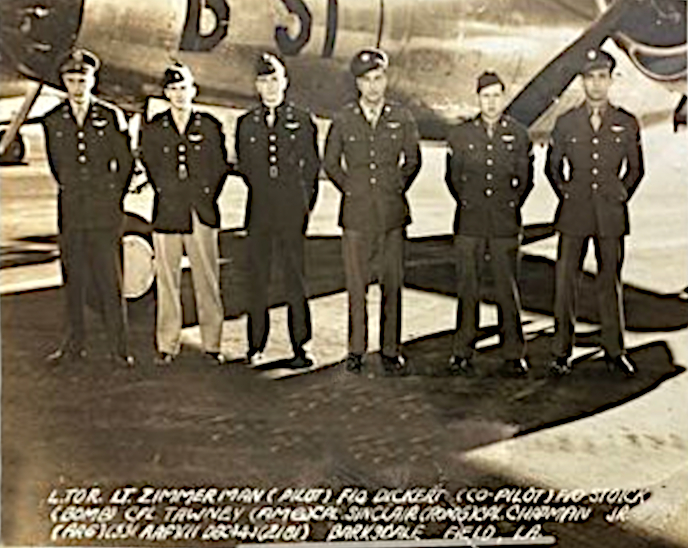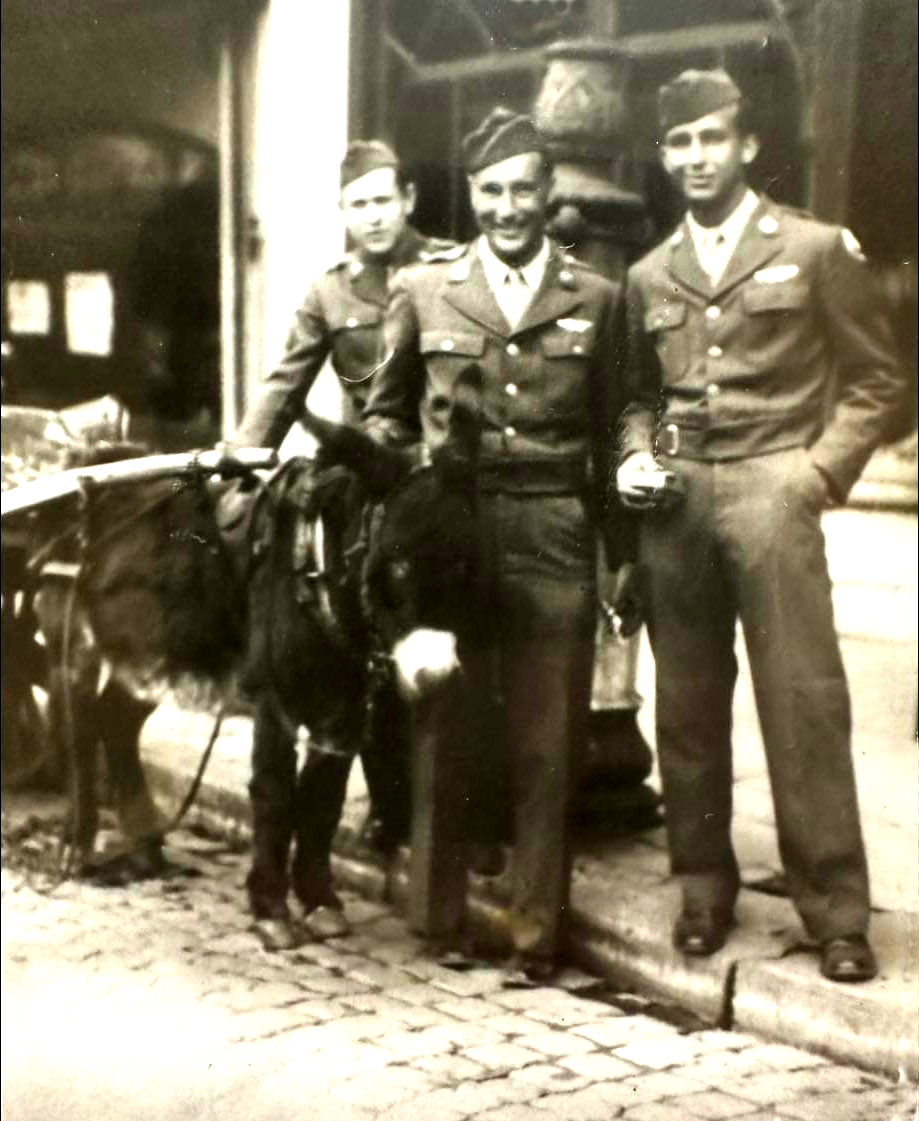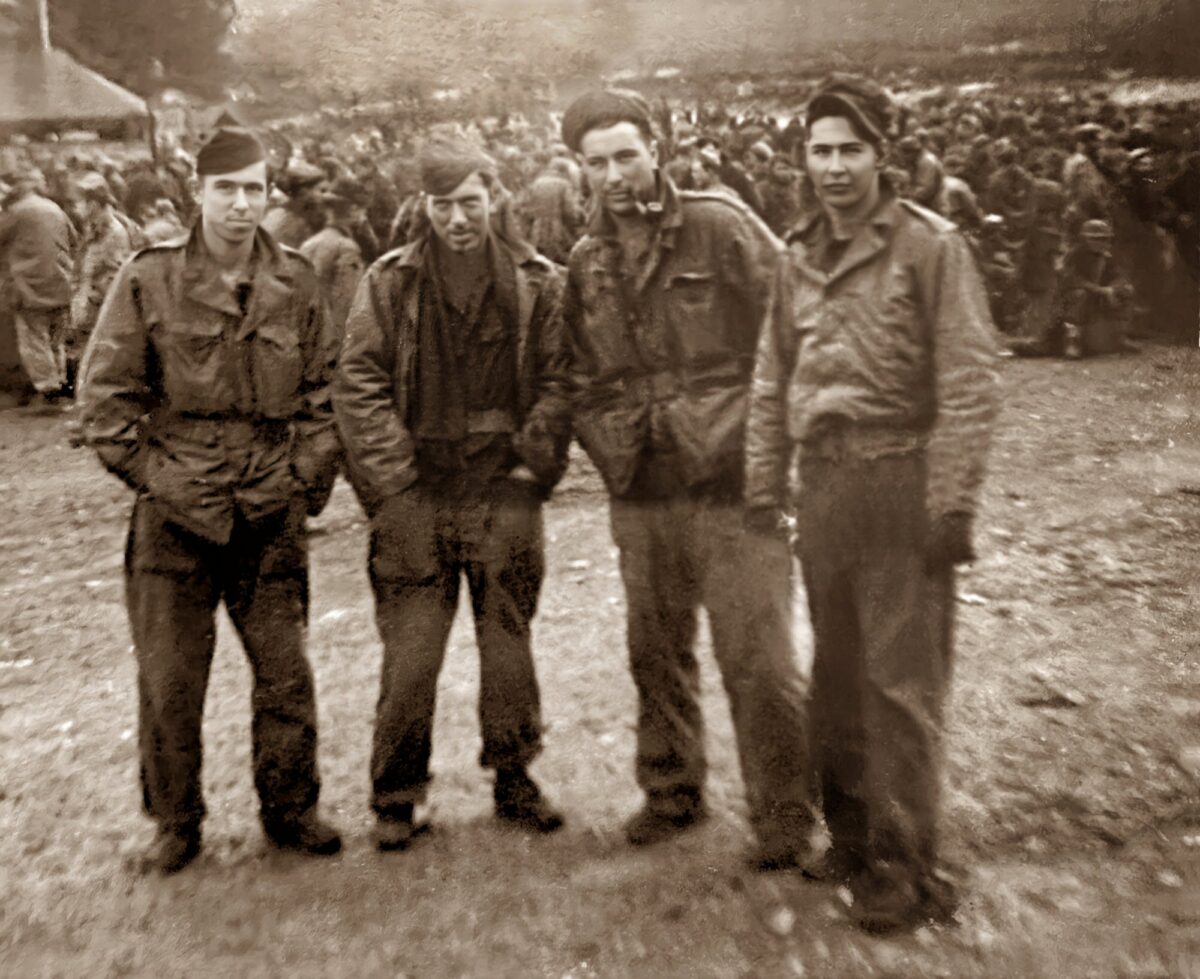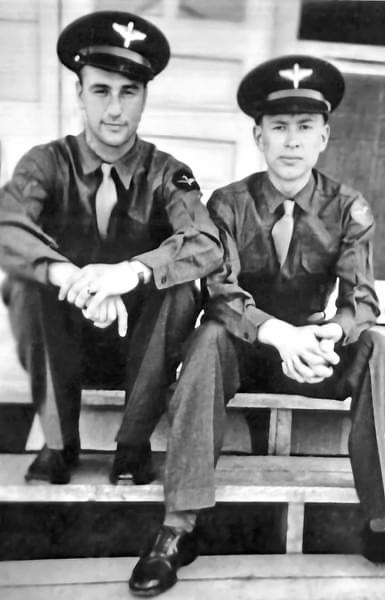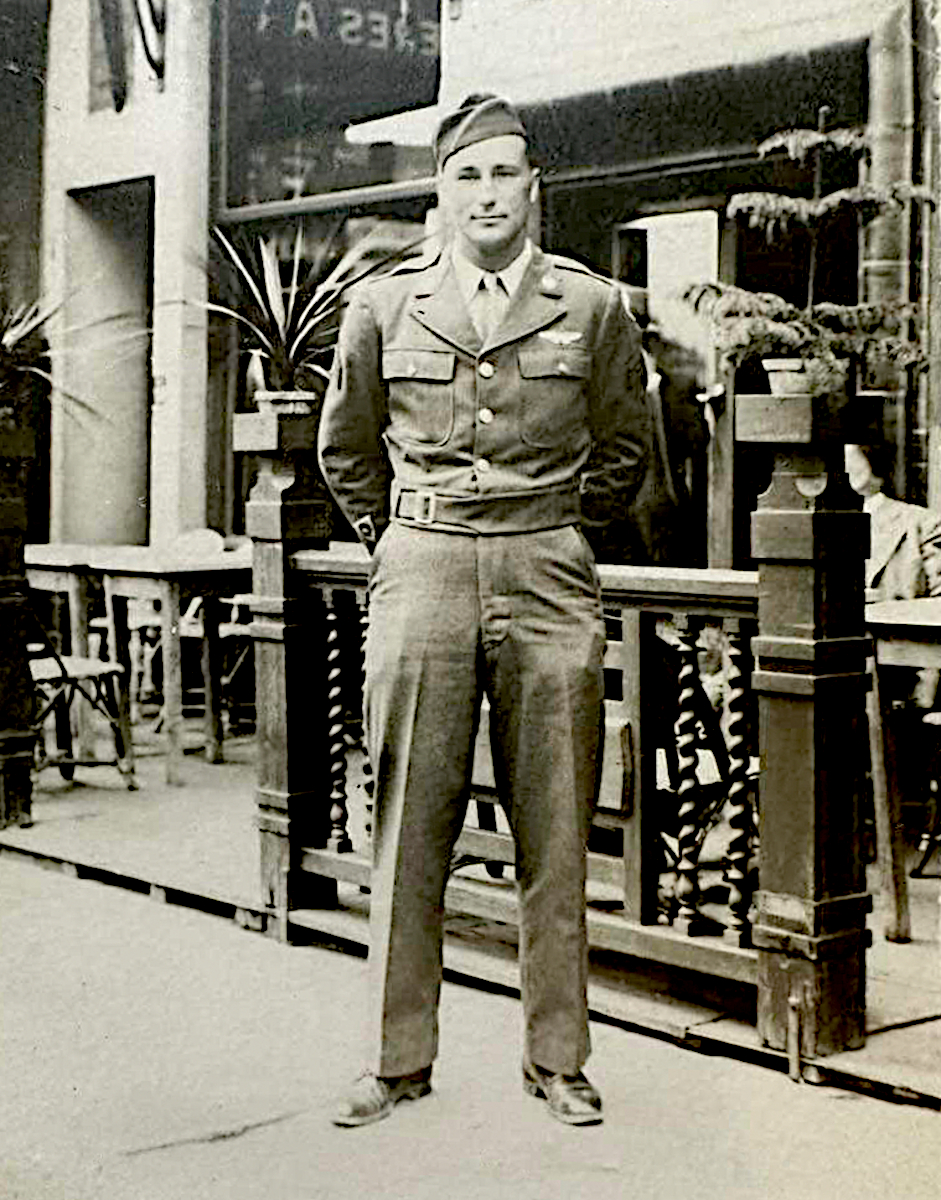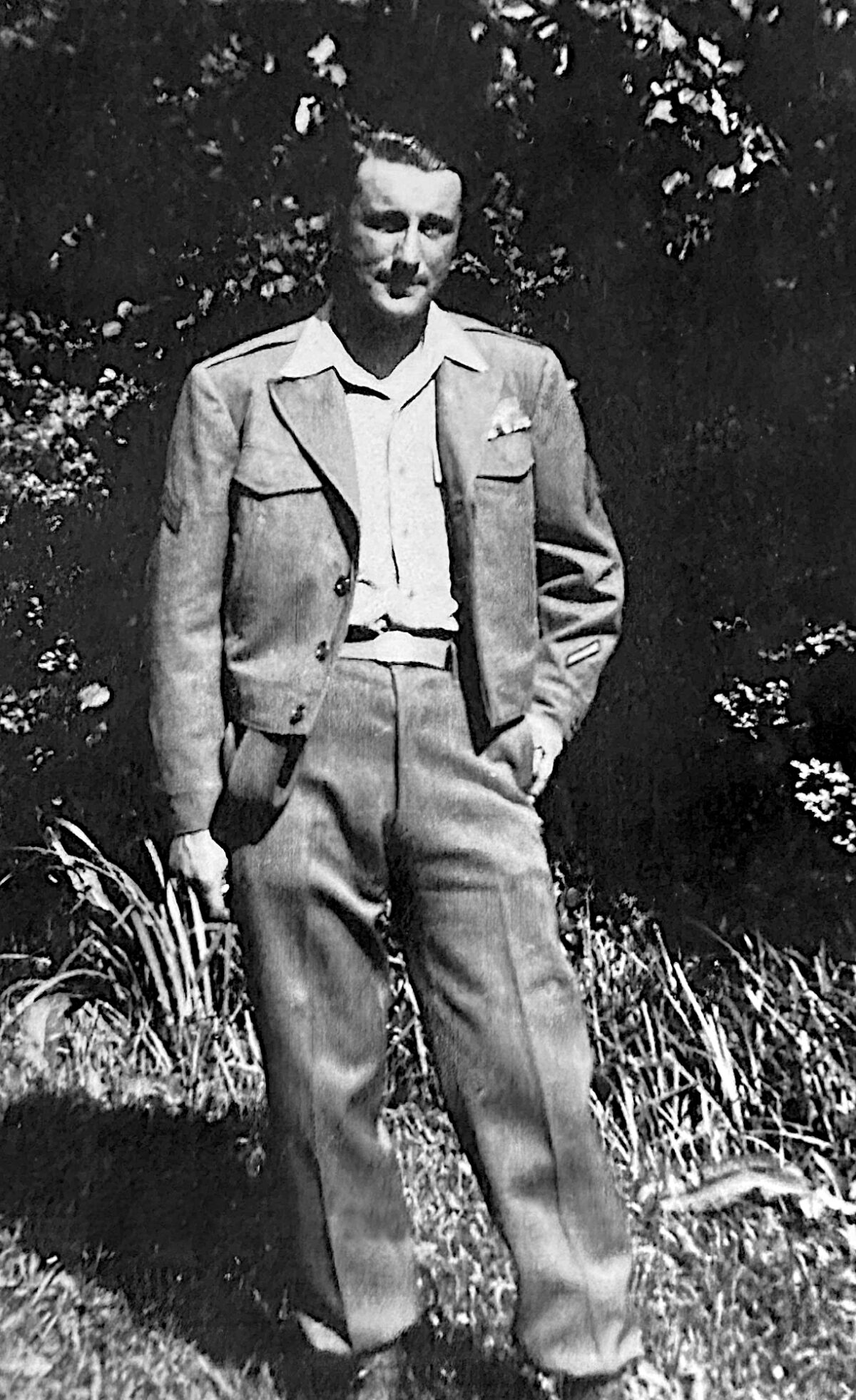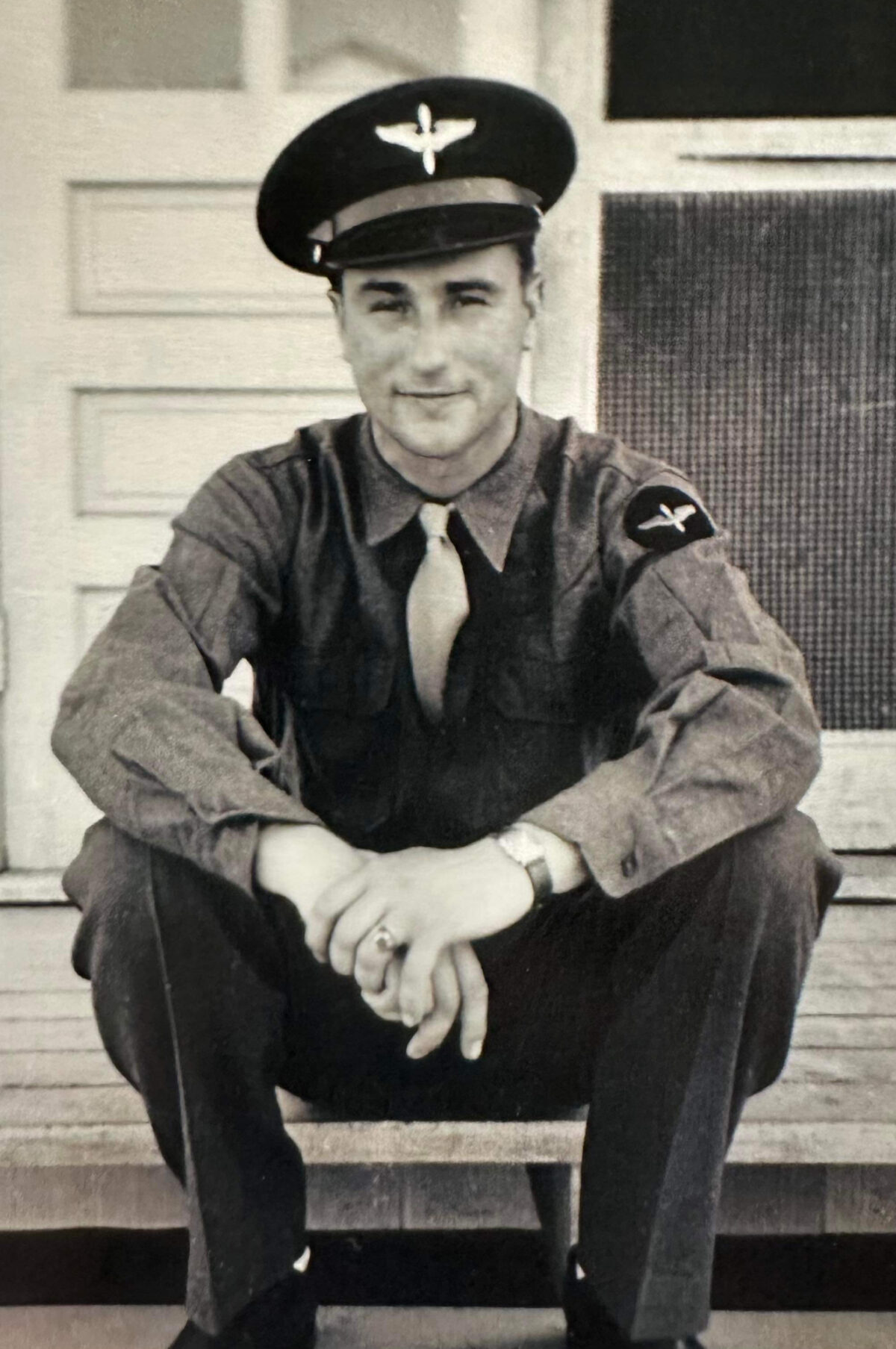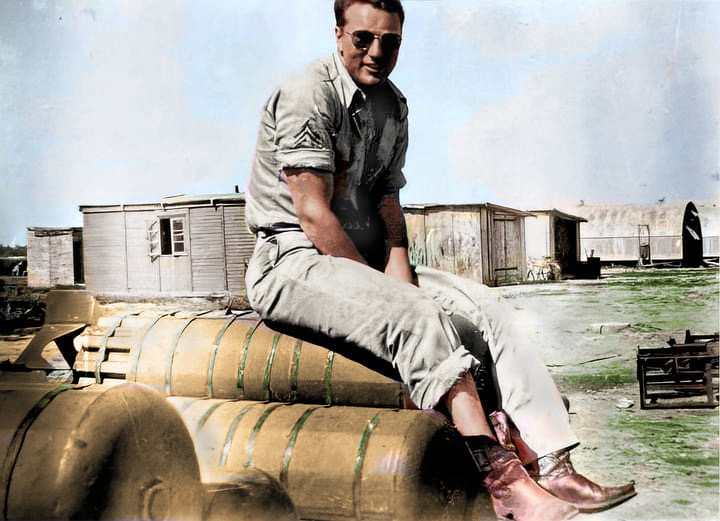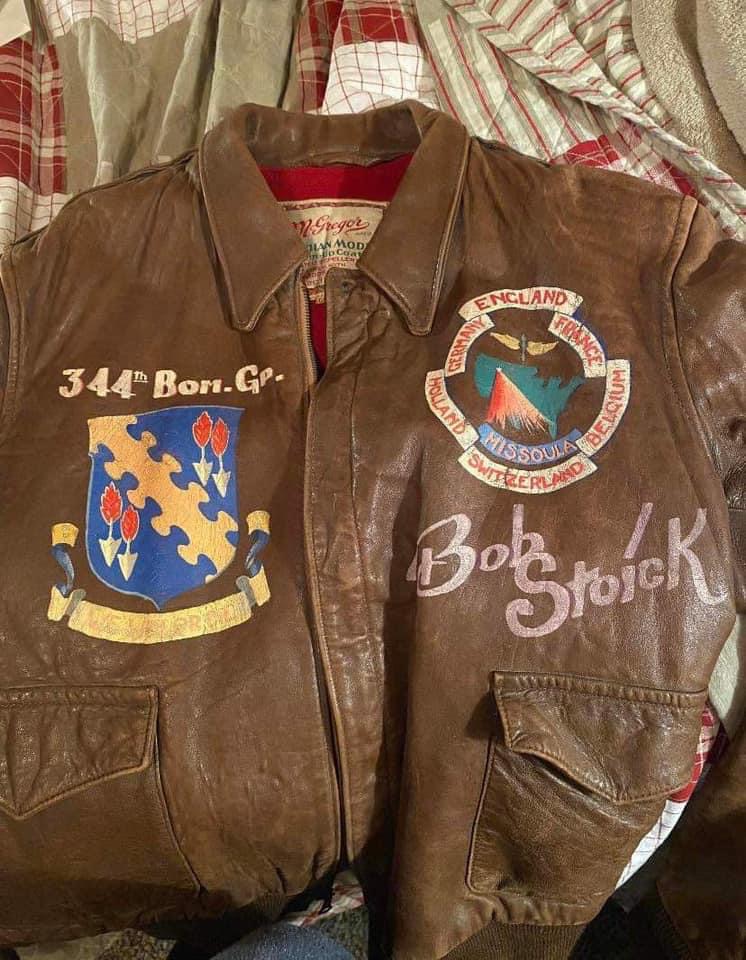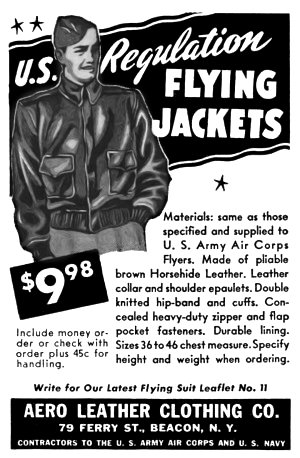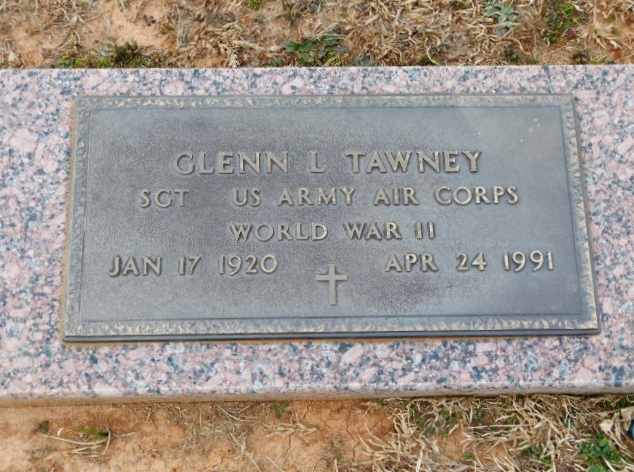Sgt. Glenn Leroy Tawney
I received an inquirey from Jarrod Tawney regarding his Grandfather, Sgt. Glenn Tawney, an engineer/gunner with the 494th Bomb squadron of the 344th bomb group. He supplied many pictures. Like many airmen, Tawney didn’t talk much about his service. Around the same time, I heard from Barbie Stoick Bournstein whose dad, Lt. Robert Leroy Stoick, flew as bombardier with Tawney’s crew. Some of the pictures I have gotten show them both.
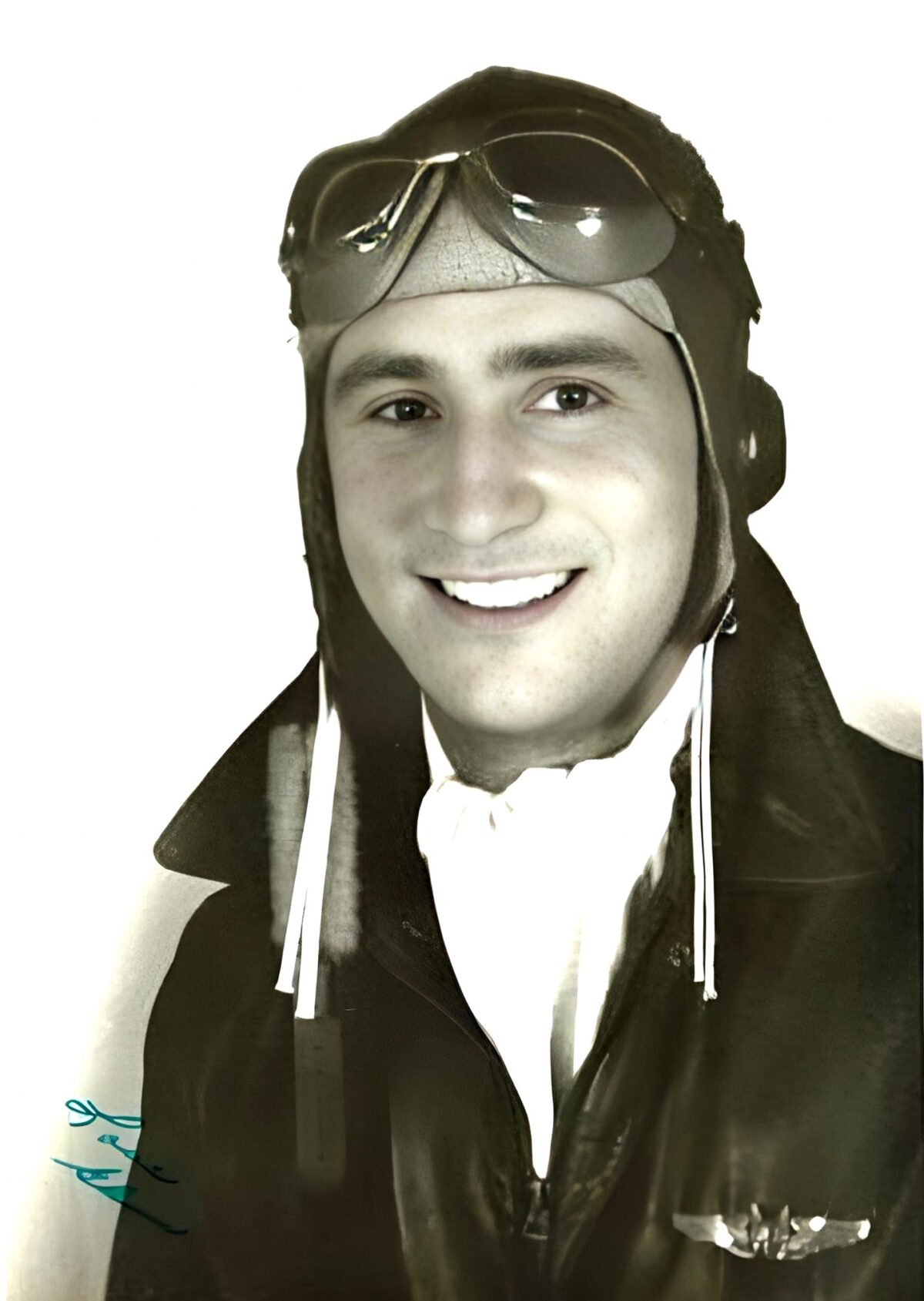
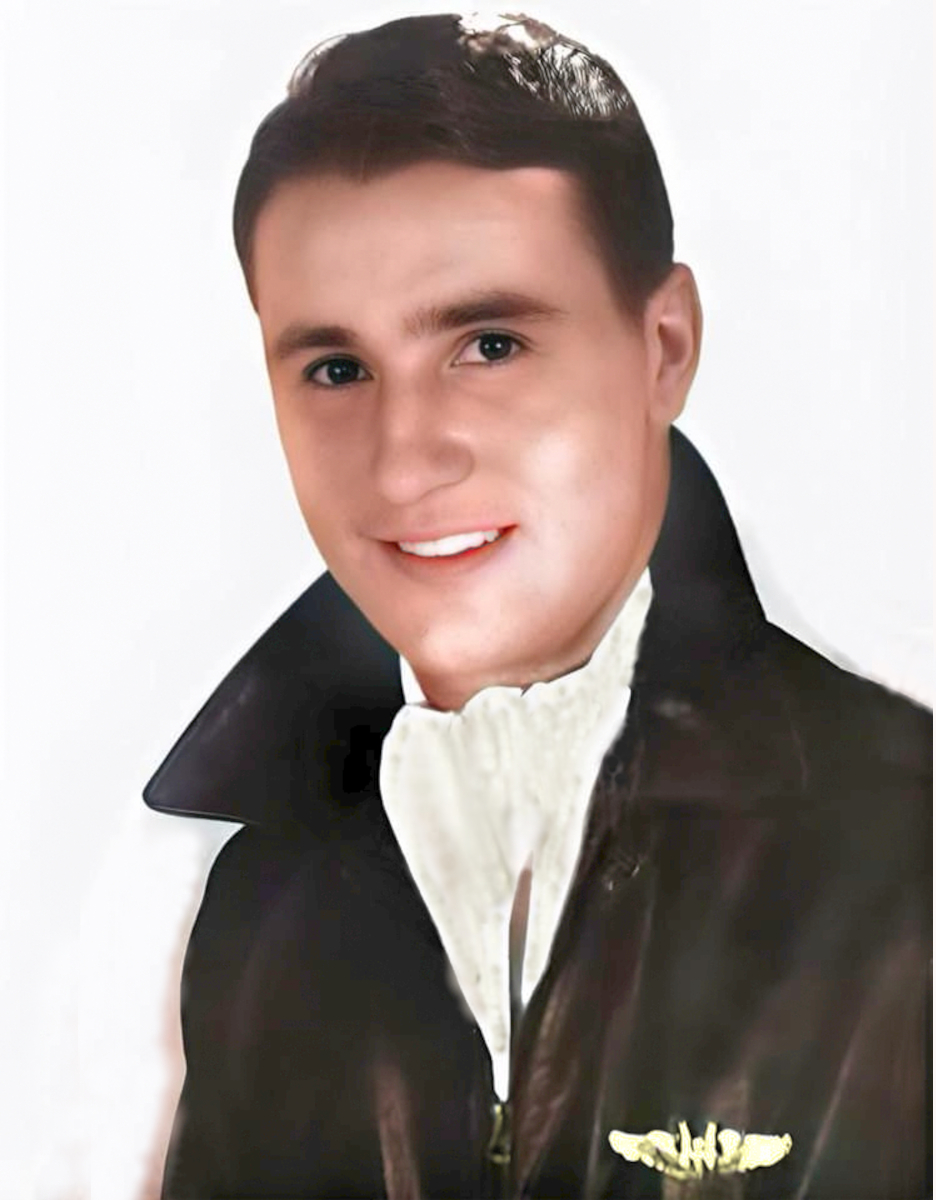
Provided a mission list from crewmate Stoick, I was given a head start in researching their missions.
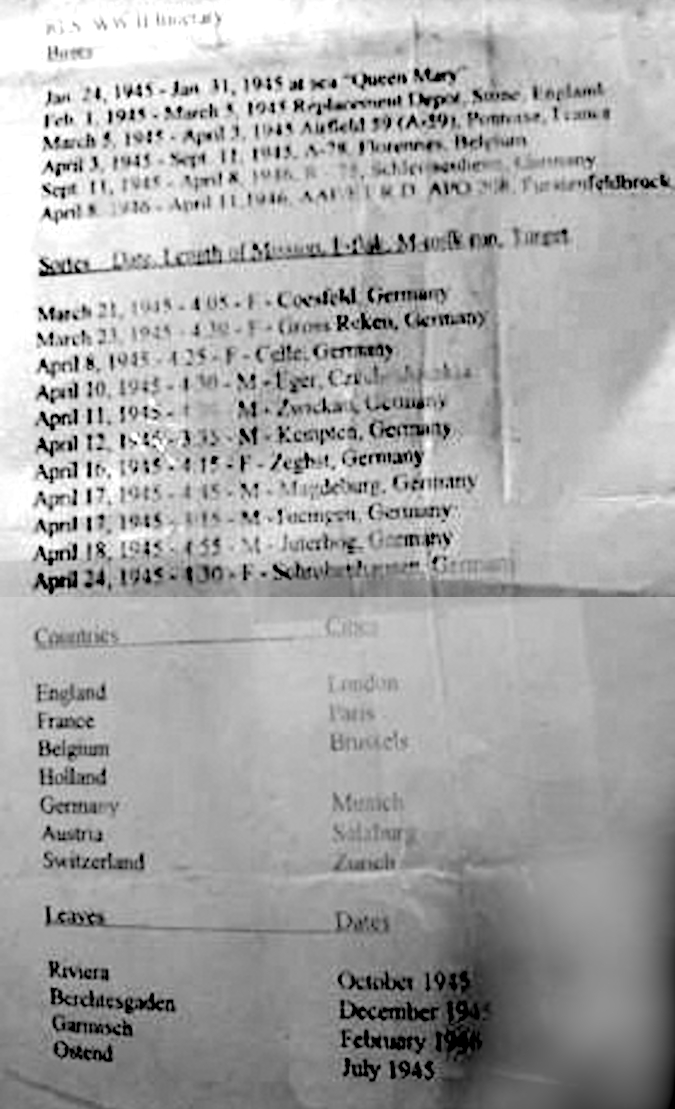
The mission list and group records indicate their first mission on March 17, 1945 ( records show no mission on that date) and the last being April 25, 1945 which was the second to last mission for the 344th bomb group.
According to 344th Bomb Group (M) “Silver Streaks” History & Remembrances World War II;
From March 16 through March 19, Barracks areas, Marshalling Yards, Railroad bridges and defended owns were bombed at Landau, Neustadt, Annweiler, Worms, Volkmarsen and Barmen.
On March 20, a target of opportunity was attacked at Sythen.
March 21 two missions were flown. The morning mission to Coesfeld was a Pathfinder led attack. The first box dropping their bombs on the PFF plane, but the second box leader taking over for visual bombing. Both boxes had excellent records.
In the afternoon Ahaus was attacked by a threebox formation with generally superior results obtained.
March 22 two missions were flown to Coesfeld, a defended town, the second mission dropping on “GEE.” Excellent results were again obtained.
On March 23 Dinslaken was attacked with superior results. That afternoon Gr. Reken Borke Marshaling Yards were bombed by boxes with superior results.
March 24 was a busy day with three missions successfully flown. The first attacked Bocholt by PFF, with results unobserved. Stacltlohn with excellent results and Colbee by PFF with fair results obtained.
The Limburg Marshaling Yard was attacked March 25 by three boxes and with generally superior results.
The next four missions were all Pathfinder led and attacked the following points, the results being unobserved due to cloud cover.
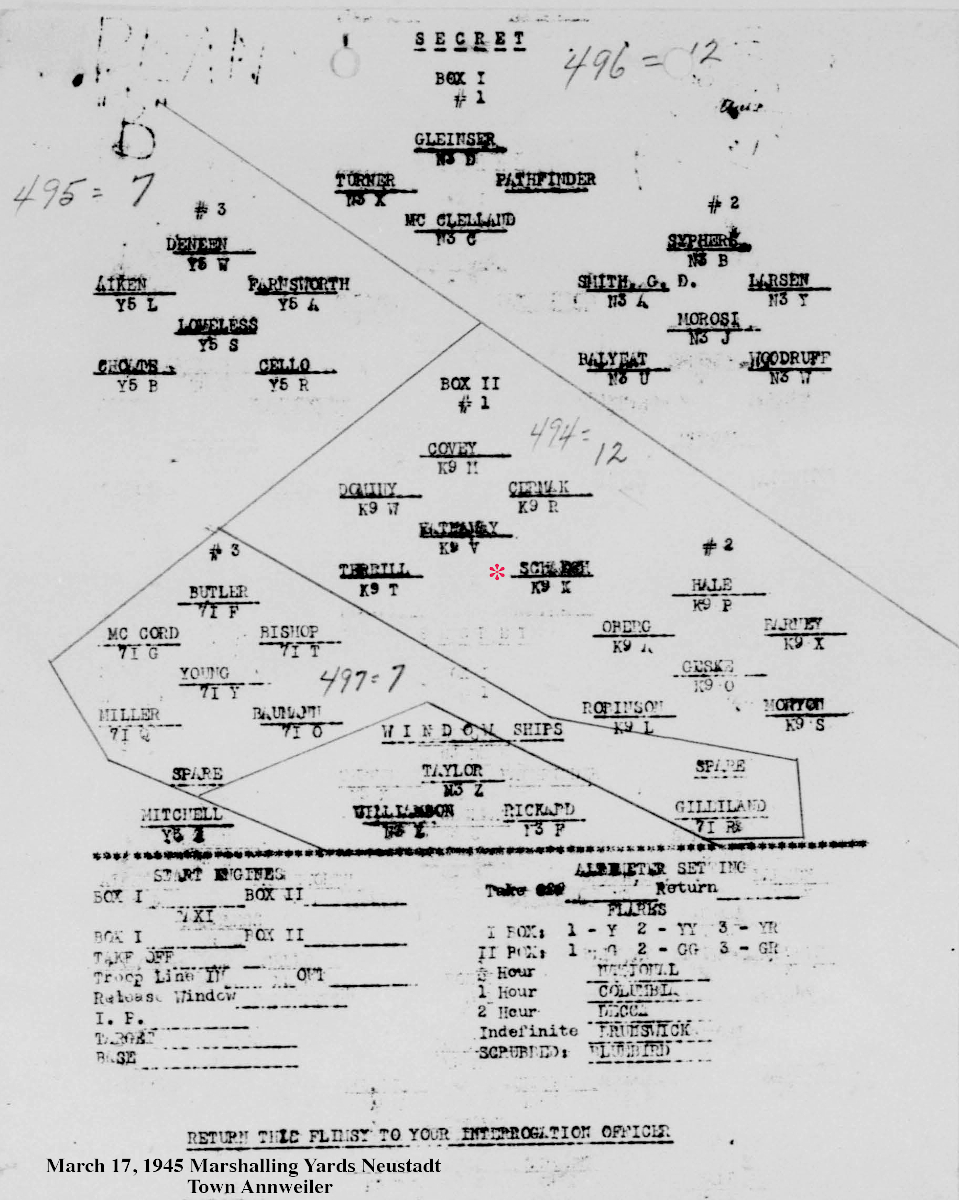
In his first mission, Sgt. Glenn Leroy Tawney flew with pilot 1st Lt. Schaech in position 2-1-5. Their plane was K9-K.
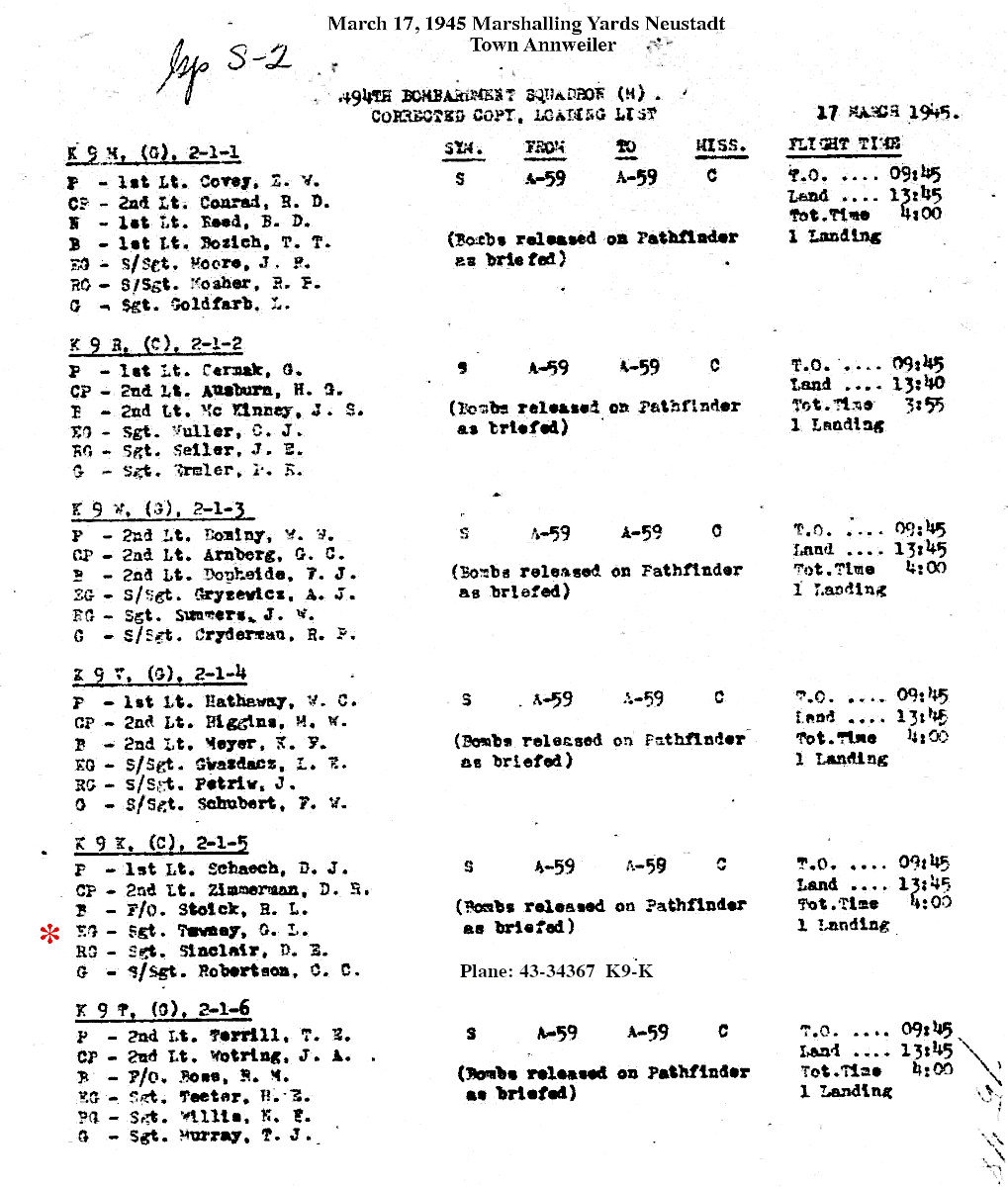
The crew consisted of pilot 1st Lt. D.J. Schaech, co-pilot 2nd Lt. D.R. Zimmerman, Bombardier Lt. R.L. Stoick, Engineer/Gunner Sgt. G.L. Tawney, Radio/Gunner Sgt. D.E. Sinclair, Tail Gunner Sgt. T.J. Murray. Their plane was 43-34367 K9-K (no name). They took off at 9:45 am and landed 1:45 pm. They dropped their bombs upon that of the Pathfinder plane.
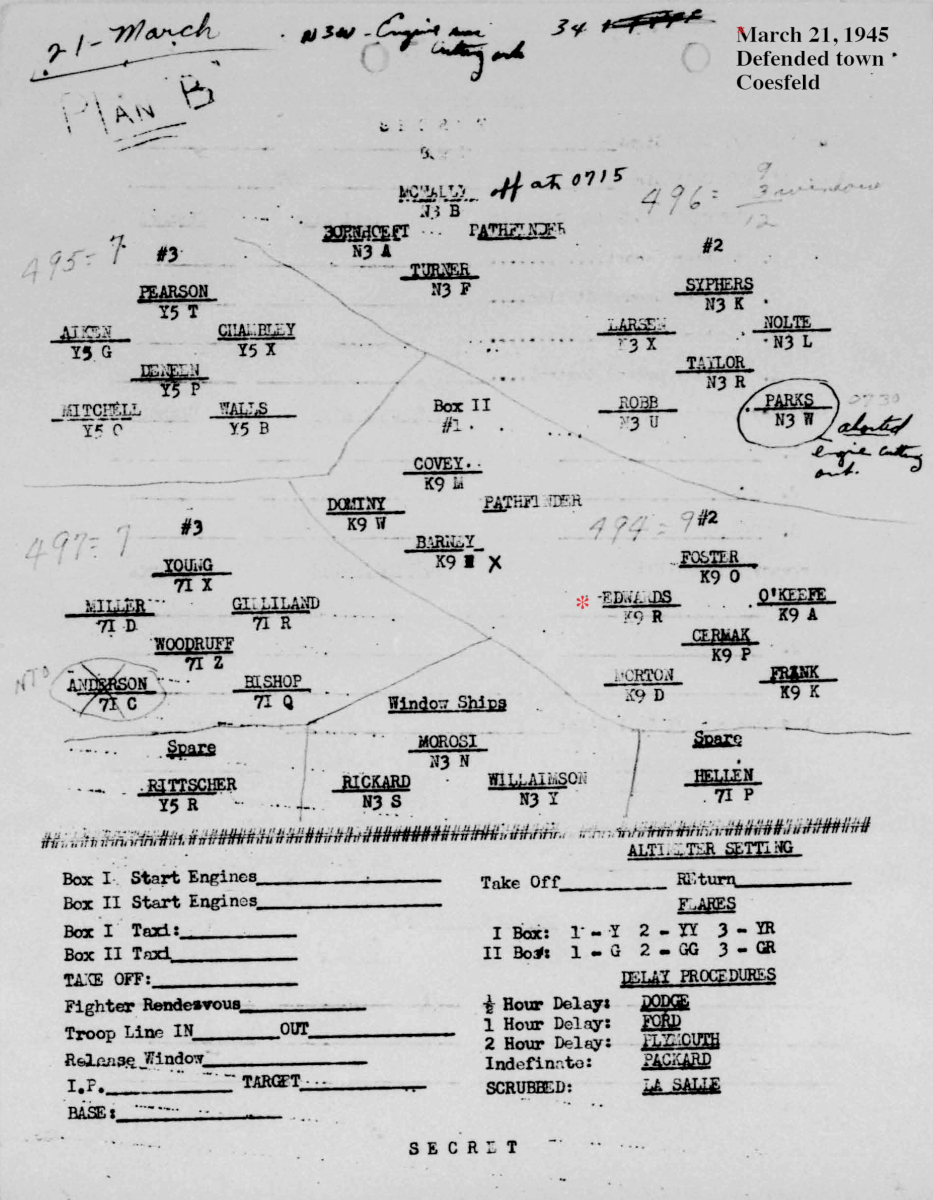
In his second mission, Sgt. Glenn Leroy Tawney flew with pilot 1st Lt. Edwards in position 2-2-3. The target was a defended town in Coesfeld, Germany. Their plane was 44-68115 Freddie Dees K9-R. K9-R Entered combat with the 344th BS / 494th BS on 15/3/45. It was the replacement aircraft for the original “Freddie Dees” which was written off in a belly landing (not sure if this is correct, needs confirmation). The aircraft flew 22 combat missions and survived the war.
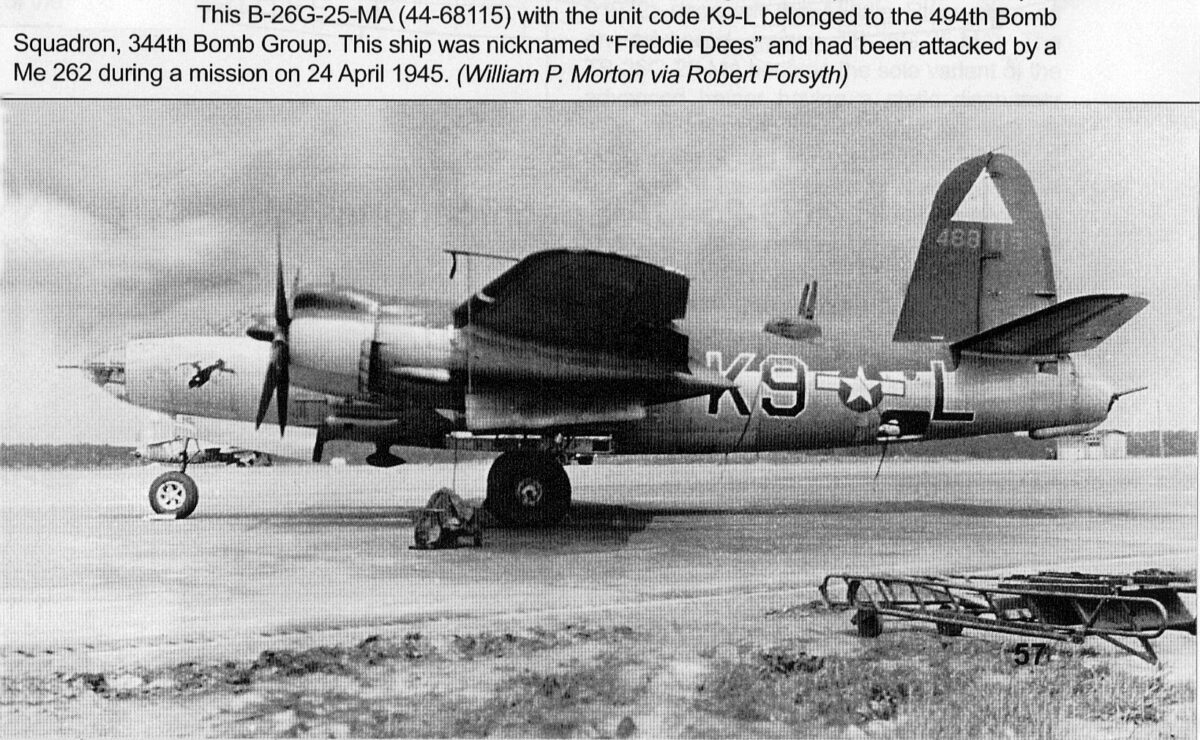
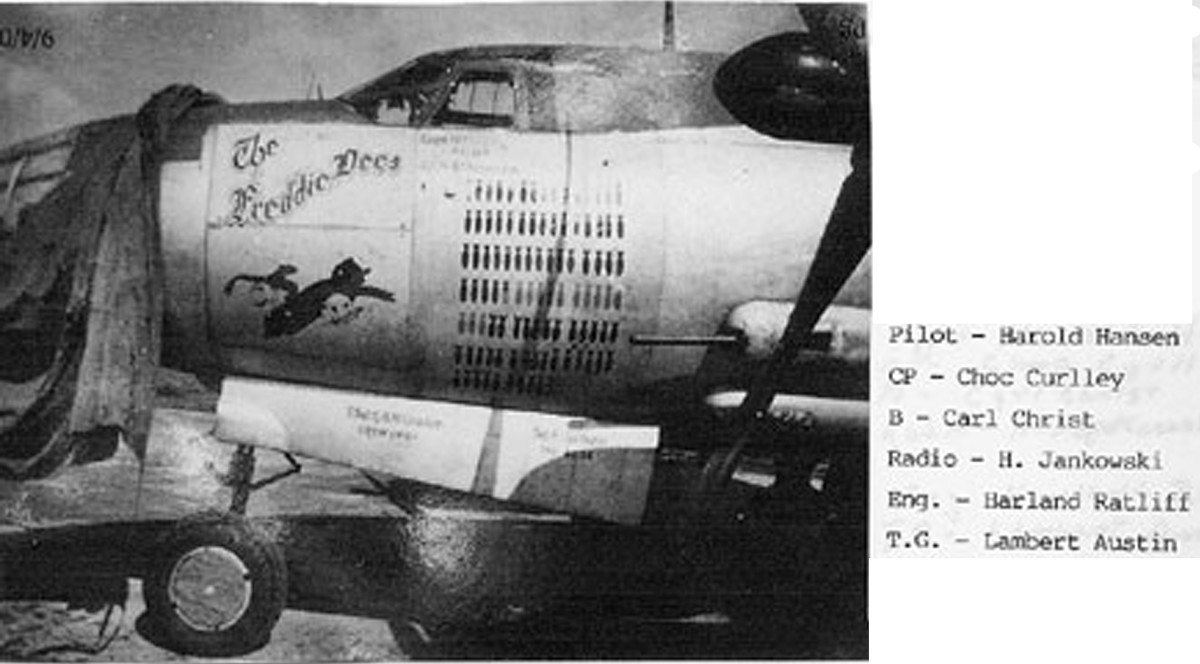
See an article about the airman the plane was named after.
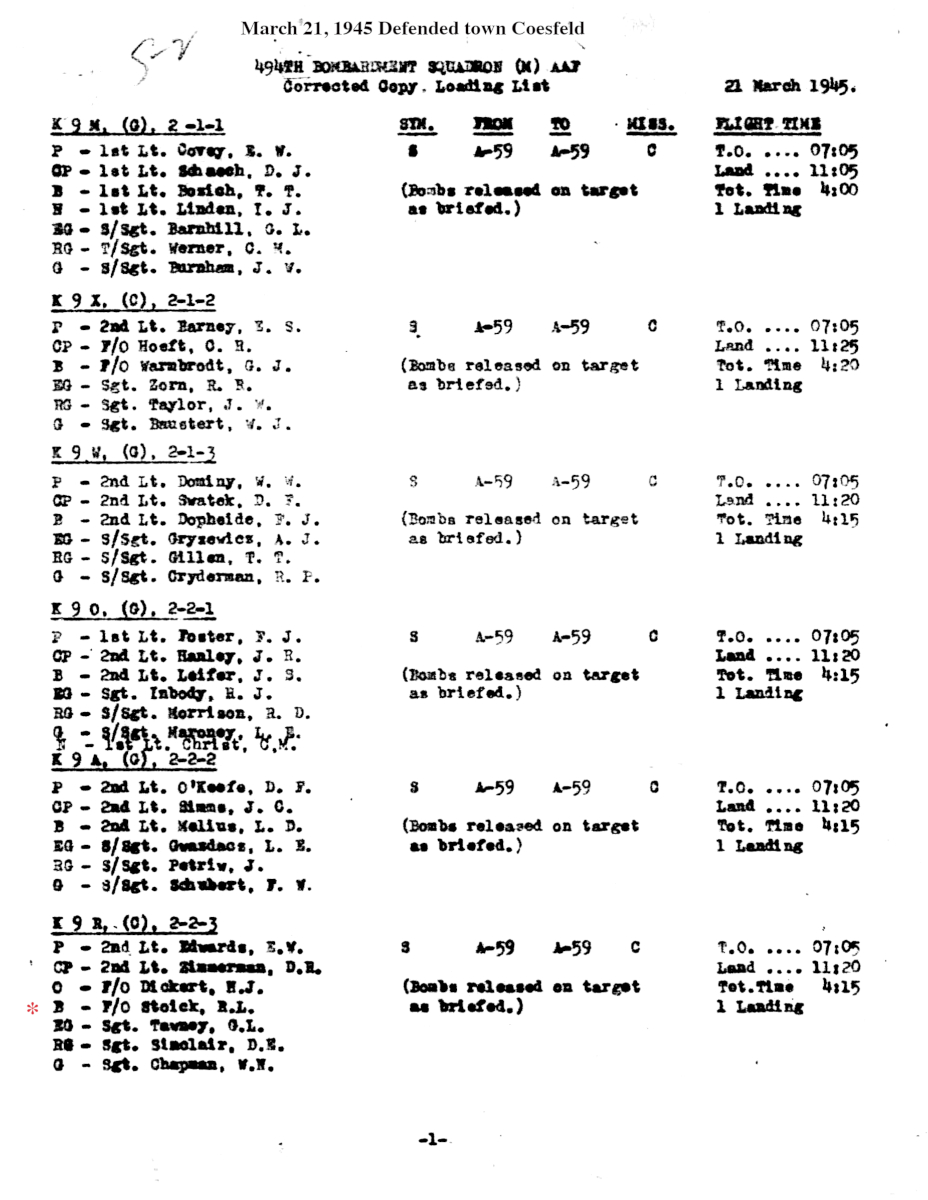
The crew consisted of pilot 2nd Lt. E. Edwards, co-pilot 2nd Lt. D.R. Zimmerman, Bombardier Lt. R.L. Stoick, Flight Officer Dickert, Engineer/Gunner Sgt. G.L. Tawney, Radio/Gunner Sgt. D.E. Sinclair, Tail Gunner Sgt. Chapman. Their plane was 44-68115 Freddie Dees K9-R. They took off at 7:05 am and landed 1:45 pm. They dropped their bombs on target as briefed.
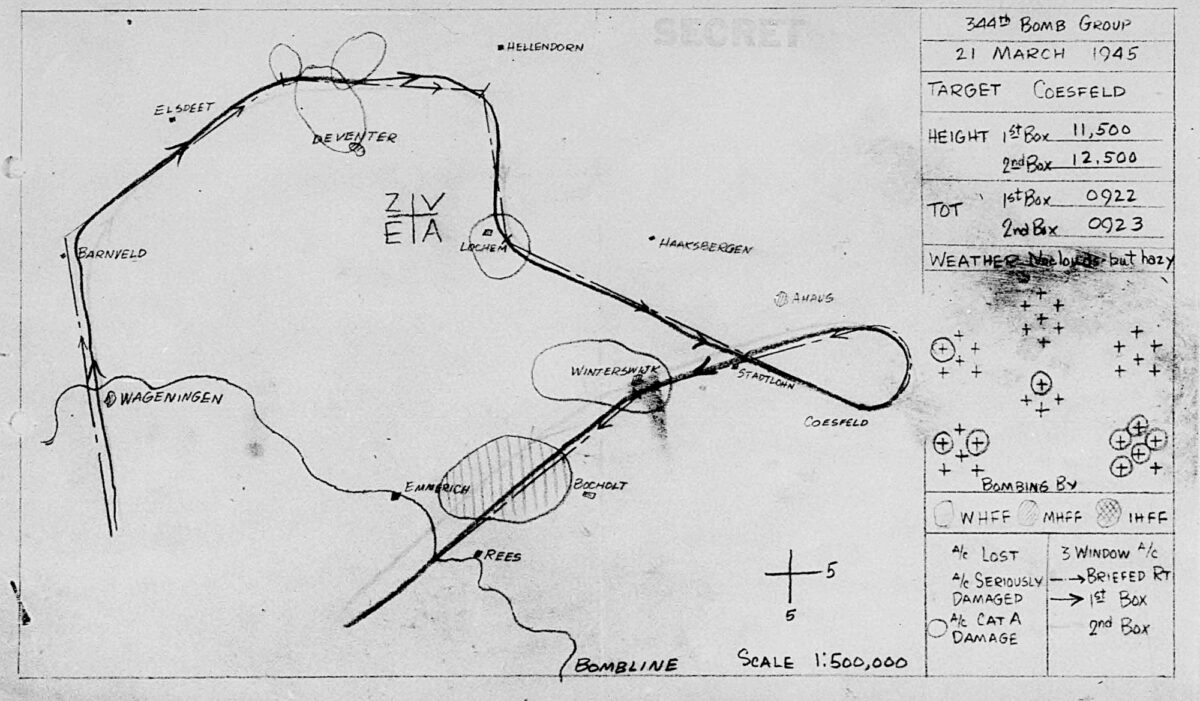
According to the hand drawn map the first box of planes flew over the target at 11,500 ft. The second box at 12,500. Bombs were dropped at 9:22 am. Nine planes including the one containing Sgt. Tawney received Category A flak damage. (Aircraft can be repaired on site)
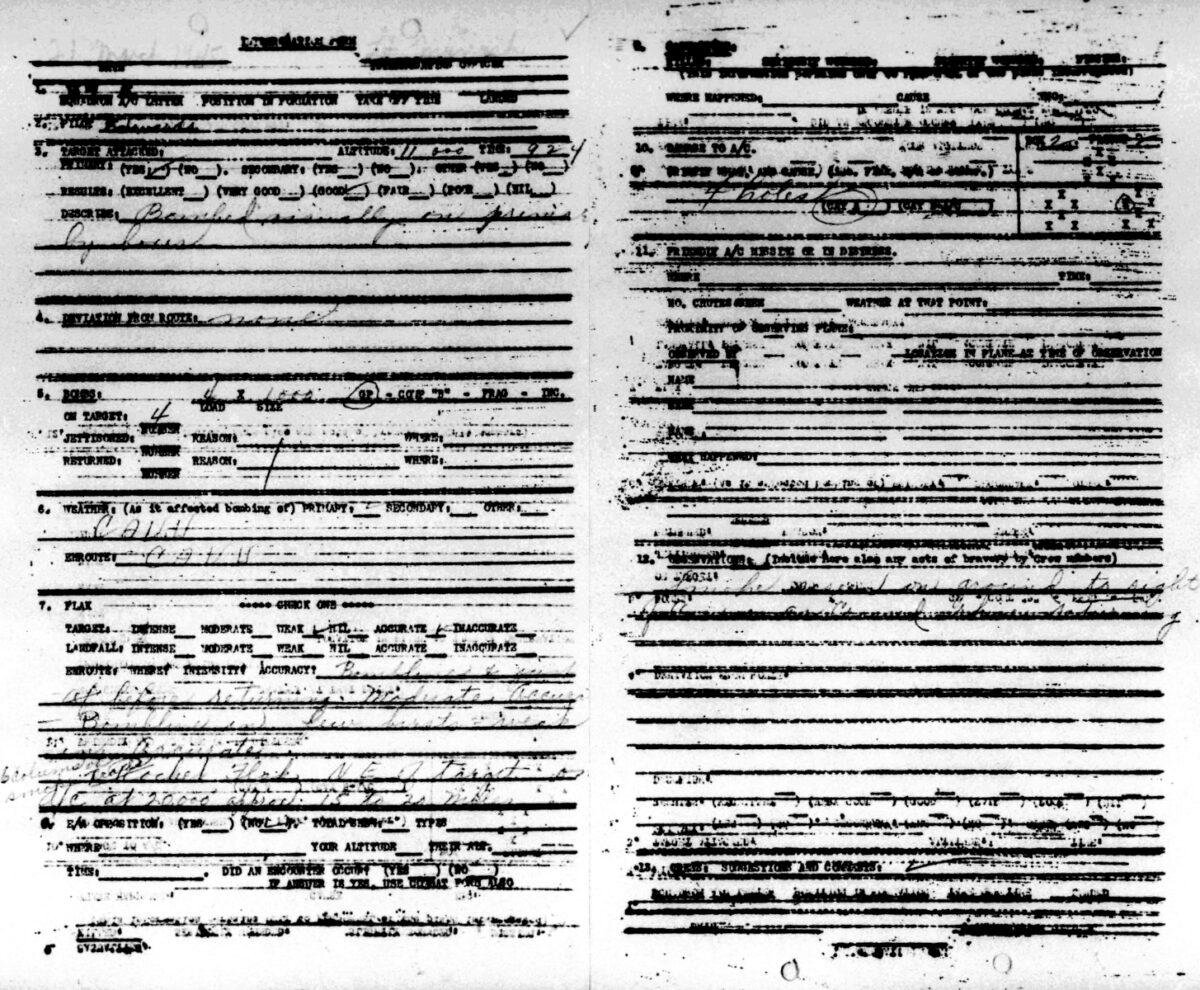
According to pilot Edwards, they bombed on the primary target by visual means at 9:24 am from 11,000 ft. The load consisted of four, 1000lb general purpose bombs. The skies were clear with ceiling and visibility unlimited. Antiaircraft fire was weak but accurate. The ship suffered four flak holes.
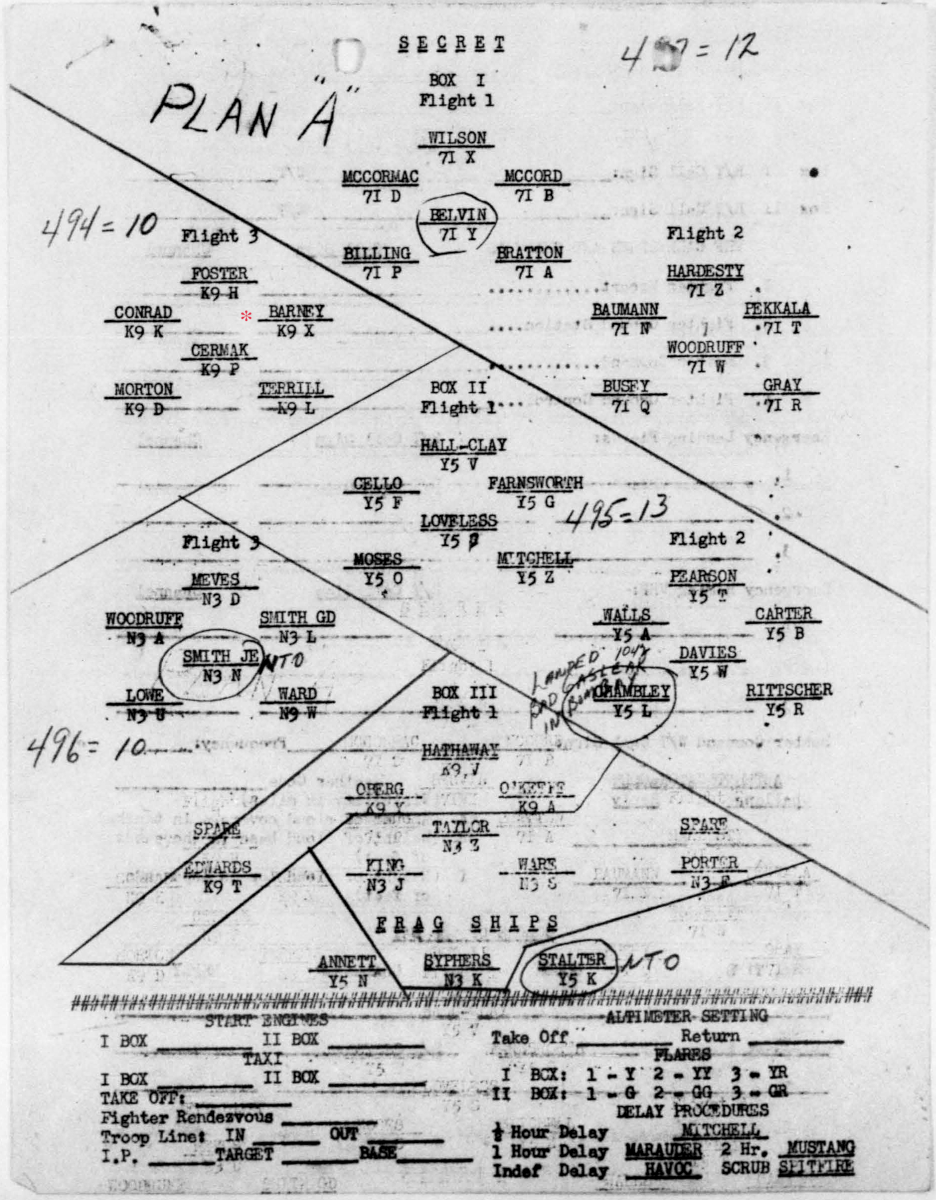
In his March 22, 1945 mission, Sgt. Glenn Leroy Tawney flew with pilot 2nd Lt. Barney in position 1-3-2. The target was, again, the defended town in Coesfeld, Germany. Their plane was *42-107542 Mary Ann K9-X
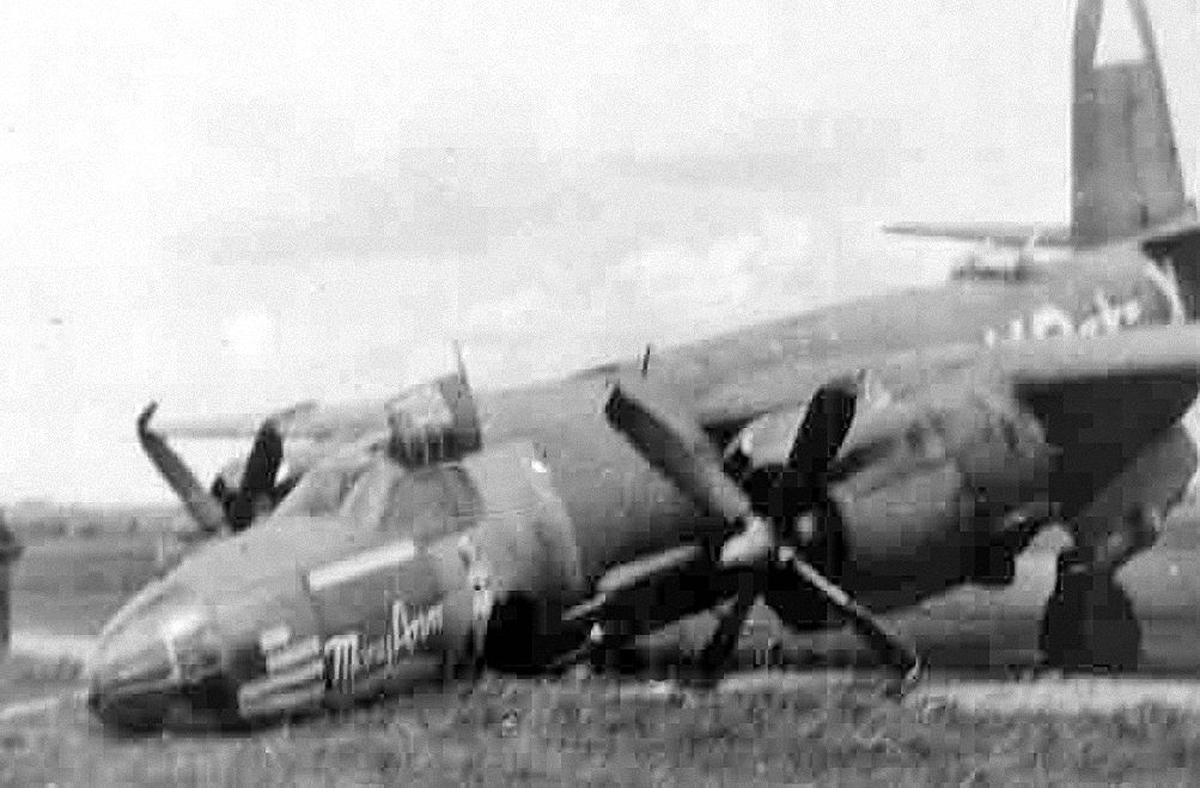
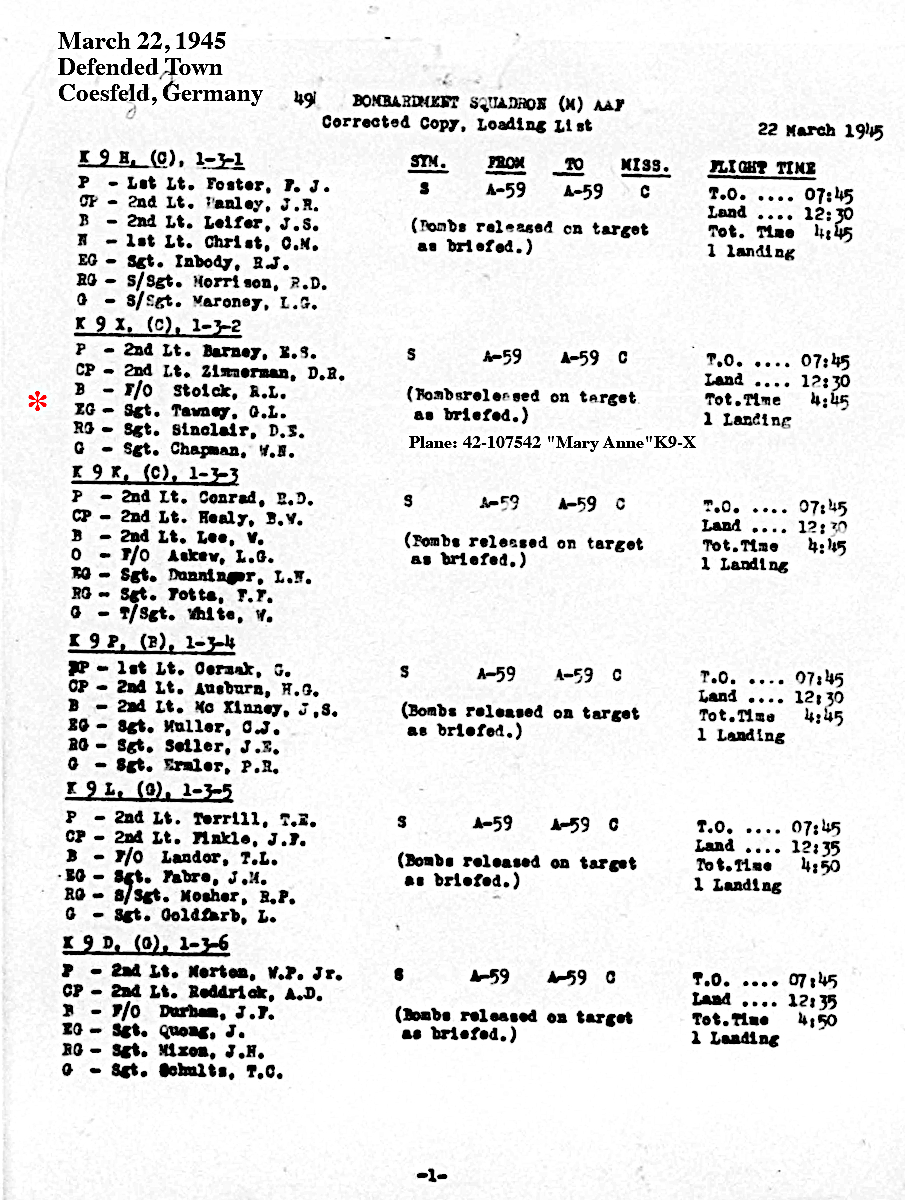
The crew consisted of pilot 2nd Lt. Barney, co-pilot 2nd Lt. D.R. Zimmerman, Bombardier Lt. R.L. Stoick, Engineer/Gunner Sgt. G.L. Tawney, Radio/Gunner Sgt. D.E. Sinclair, Tail Gunner Sgt. W. Chapman. Their plane was 42-107542 Mary Ann K9-X. They took off at 7:45 am and landed 12:30 pm. They dropped their bombs on target as briefed.
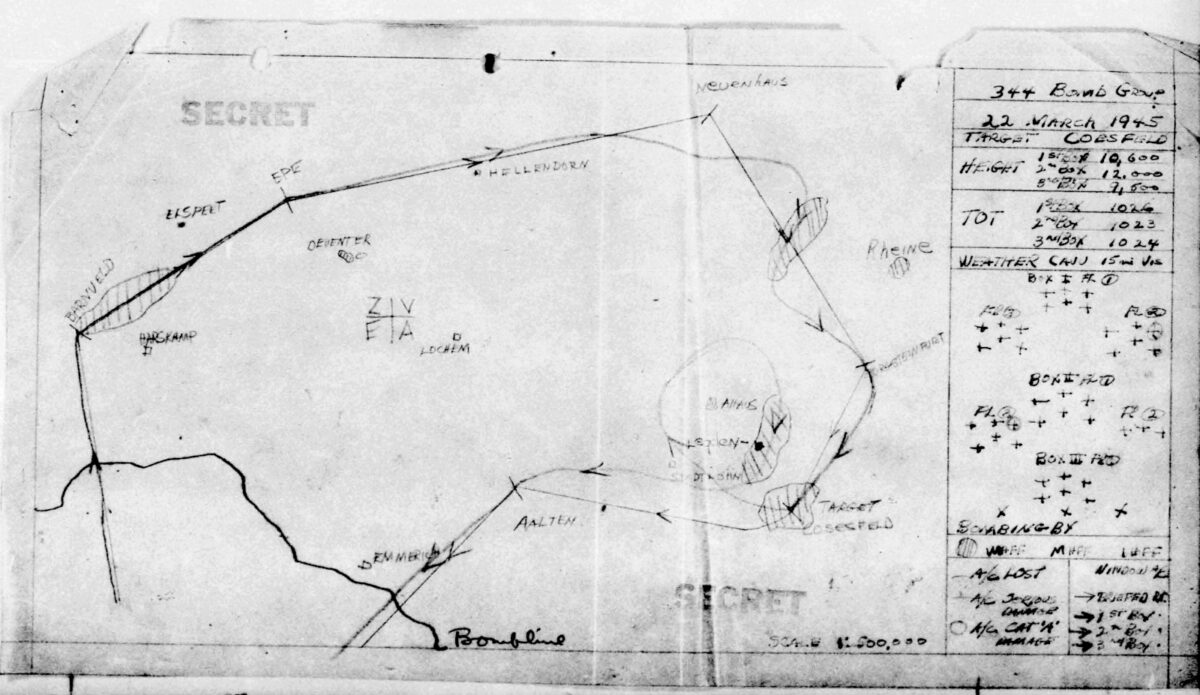
According to the hand drawn map the first box of planes flew over the target at 10,600 ft., the second box at 12,000 ft. and the third box at 9,500 ft. Bombs were dropped at 10:26 am. Two planes received Category A flak damage. (Aircraft can be repaired on site)
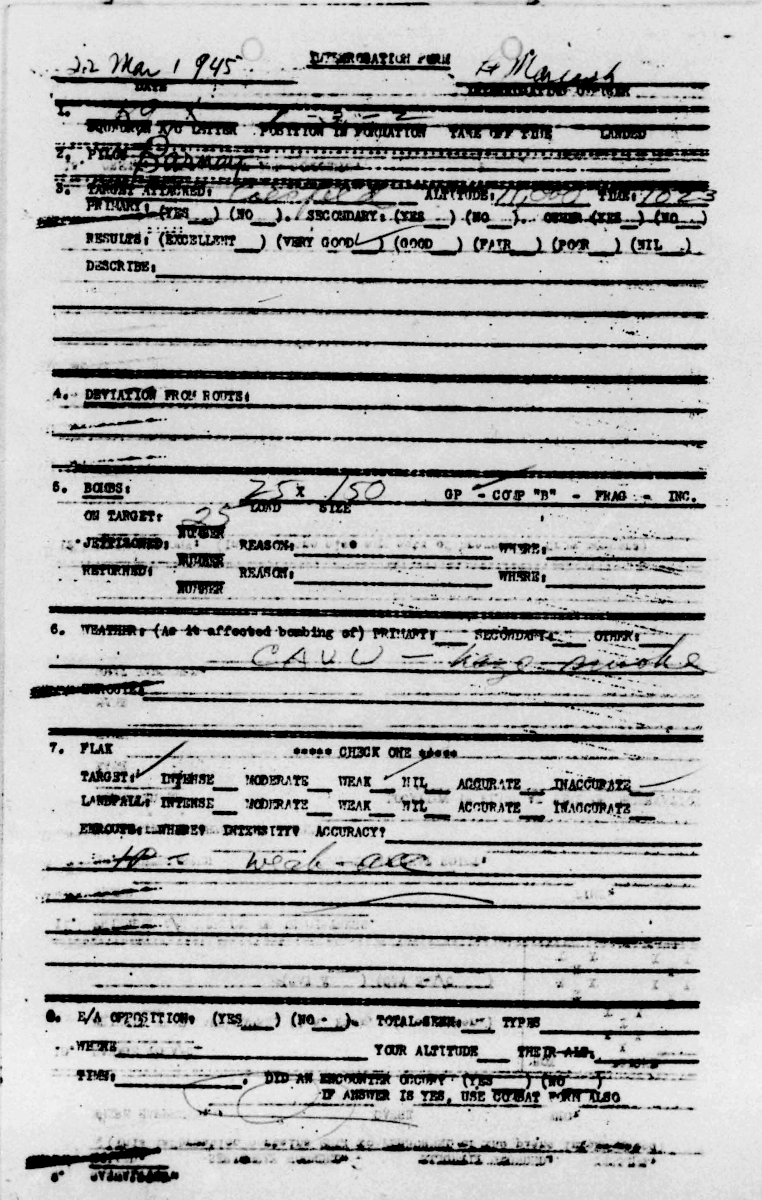
According to pilot Barney, they flew in formation position 1-3-2. They bombed on the primary target at 10:23 am from 11,000 ft. with very good results. The load consisted of 25, 150lb general purpose bombs. The skies were clear with ceiling and visibility unlimited. Antiaircraft fire was weak but accurate. No damage to the ship was mentioned.
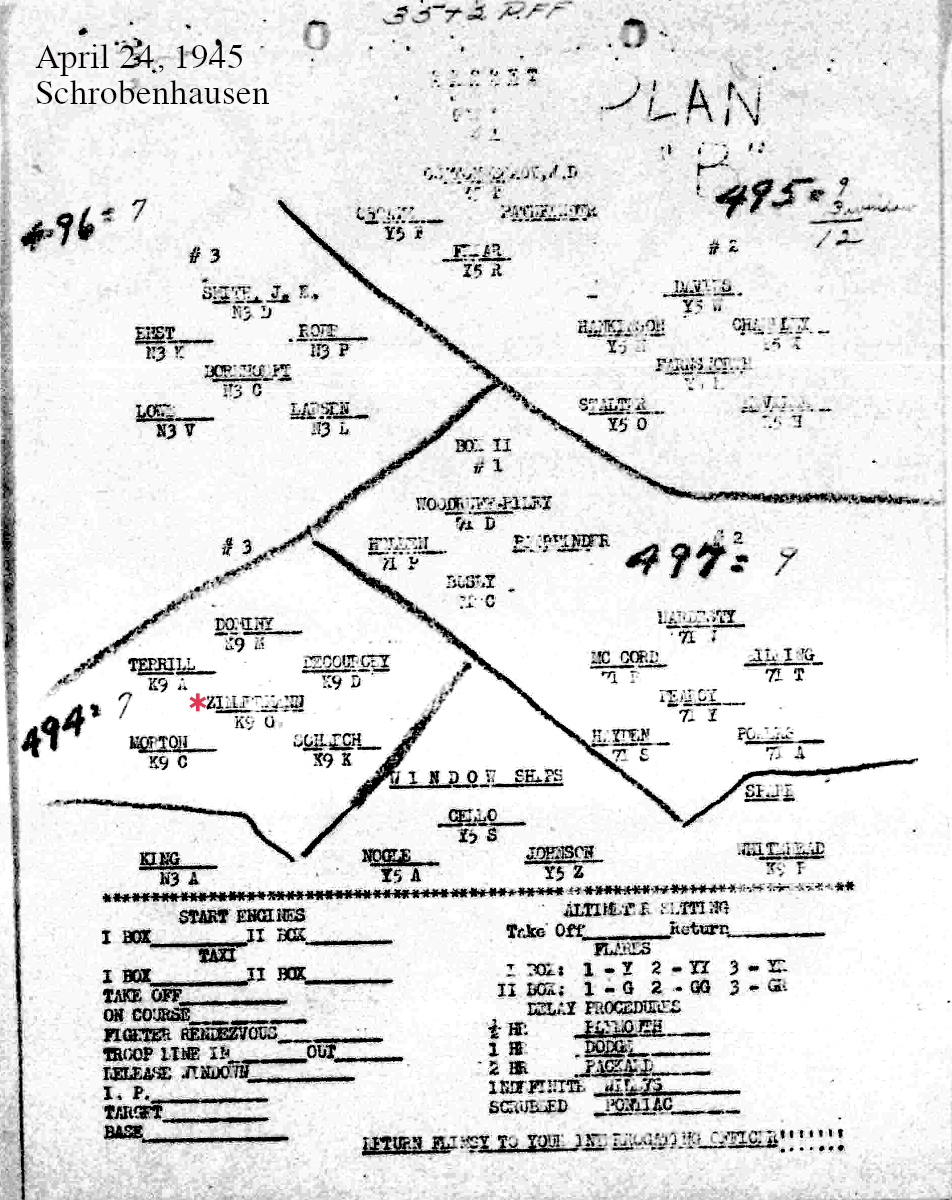
Then on April 24, a Pathfinder Mission was run to Schrobenhausen P.O.L., 35 Aircraft participating. Results were unobserved, there being 10/10 cloud cover. Flak was fired at the Group, but no damage resulted.
Sgt. Glenn Leroy Tawney flew with pilot 2nd Lt. Zimmerman in position 2-3-4. The target was Schrobenhausen, Germany. Their plane was 43-34369 Flak Hak III K9-O.
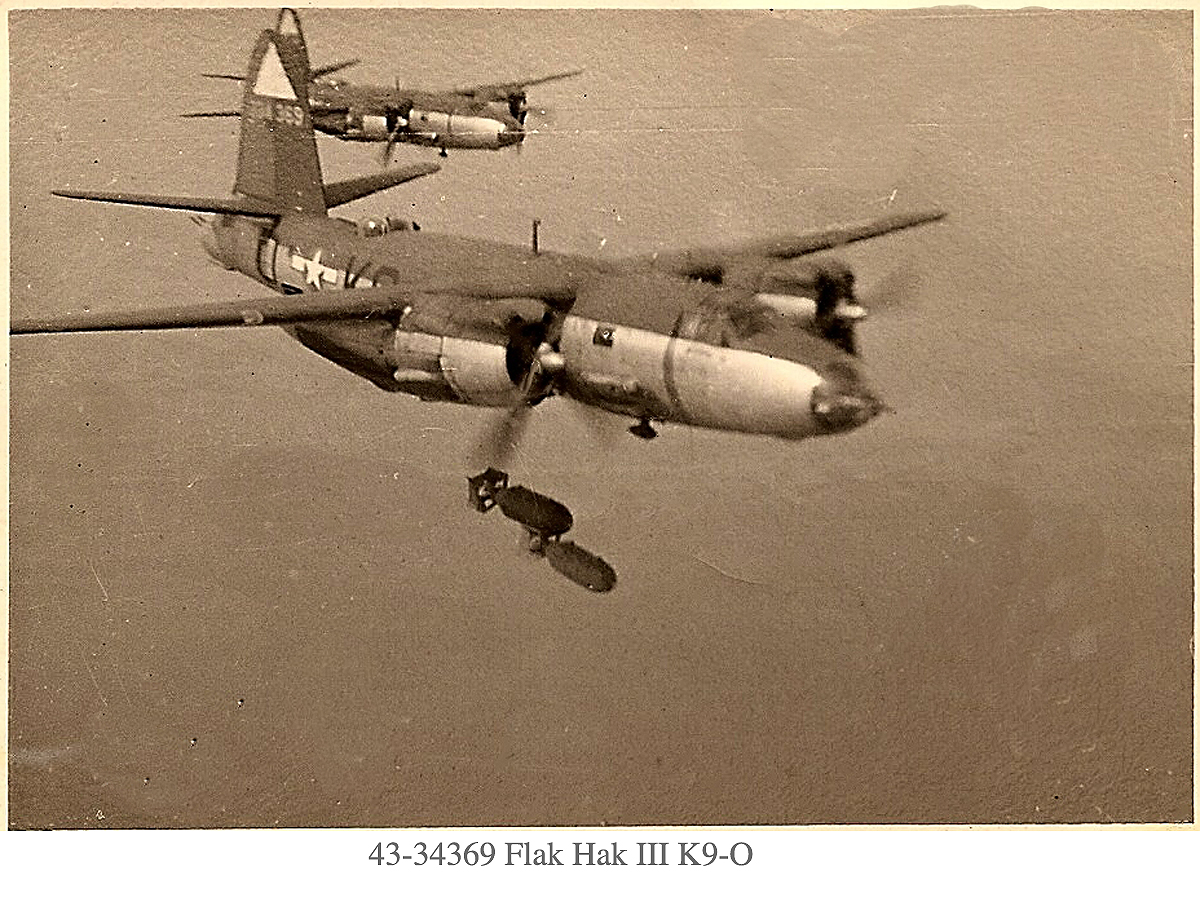
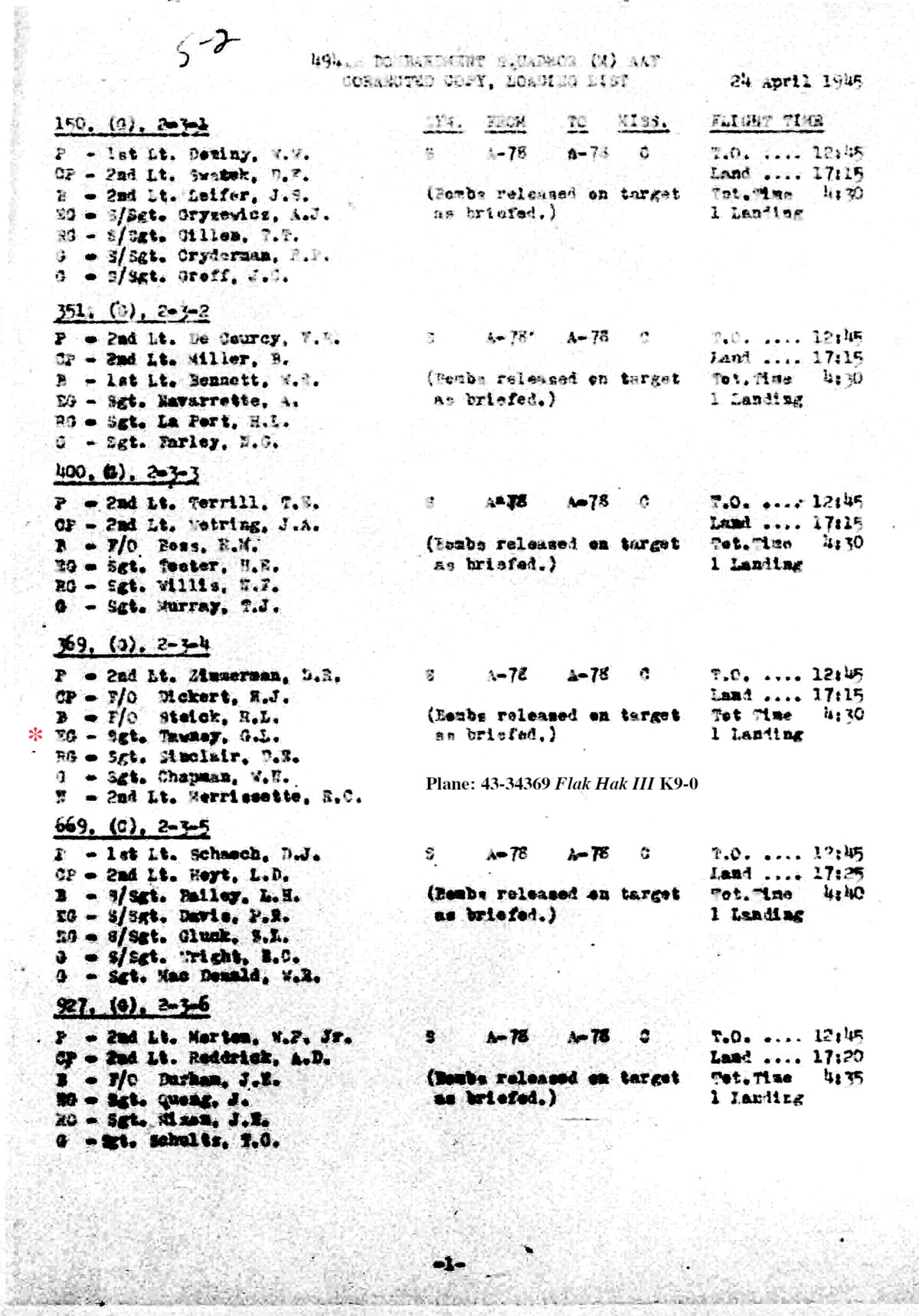
The crew consisted of pilot 2nd Lt. D.R. Zimmerman, co-pilot Flight Officer Dickert, Bombardier Lt. R.L. Stoick, Navigator 2nd Lt. Herrissette, Engineer/Gunner Sgt. G.L. Tawney, Radio/Gunner Sgt. D.E. Sinclair, Tail Gunner Sgt. W. Chapman. Their plane was 43-34369 Flak Hak III K9-O in position 2-3-4 of the formation. They took off at 12:45 pm and landed 5:15 pm. They dropped their bombs on target as briefed.
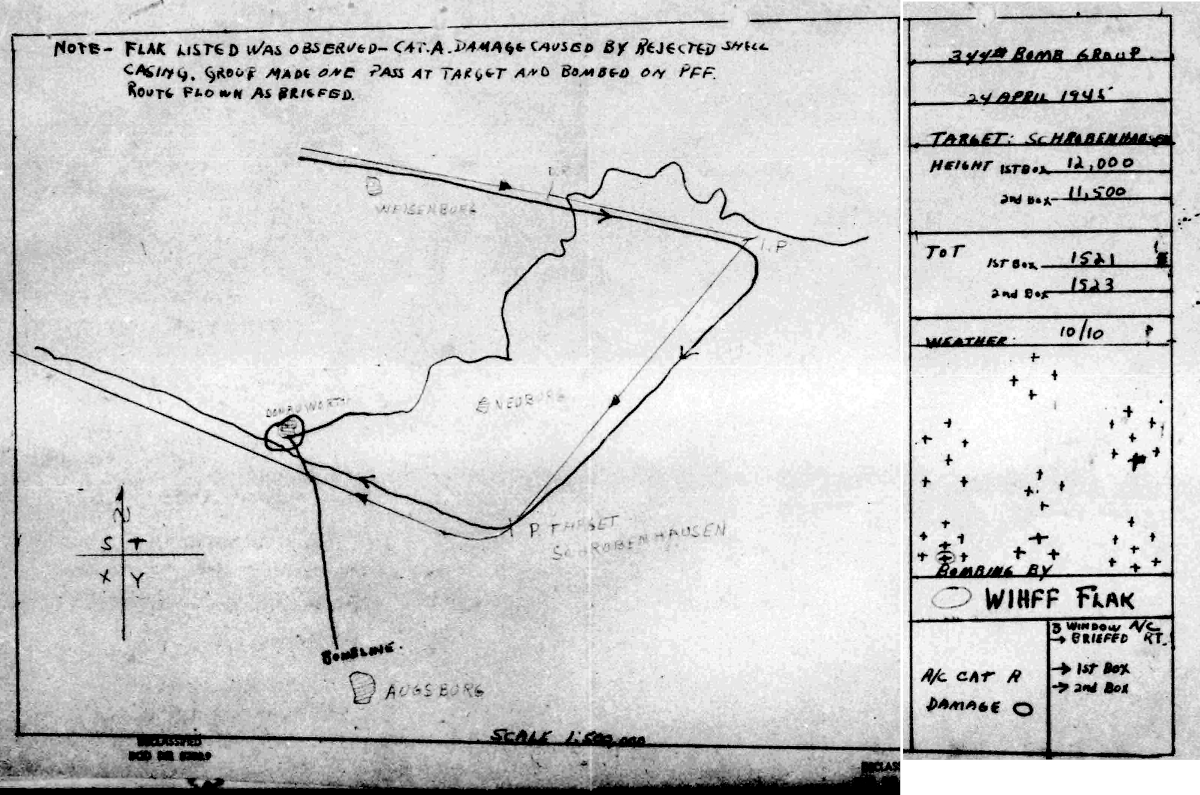
According to the hand drawn map: “Flak listed was observed – Cat. A damage was caused by rejected shell casing. Soup made one pass at target and bombed on PFF (Pathfinder). Route flown as briefed.”
The first box of planes flew over the target at 12,000 ft., the second box at 11,500 ft. Bombs were dropped at 3:21 pm. One plane received Category A damage from expended shell casing. (Aircraft can be repaired on site)
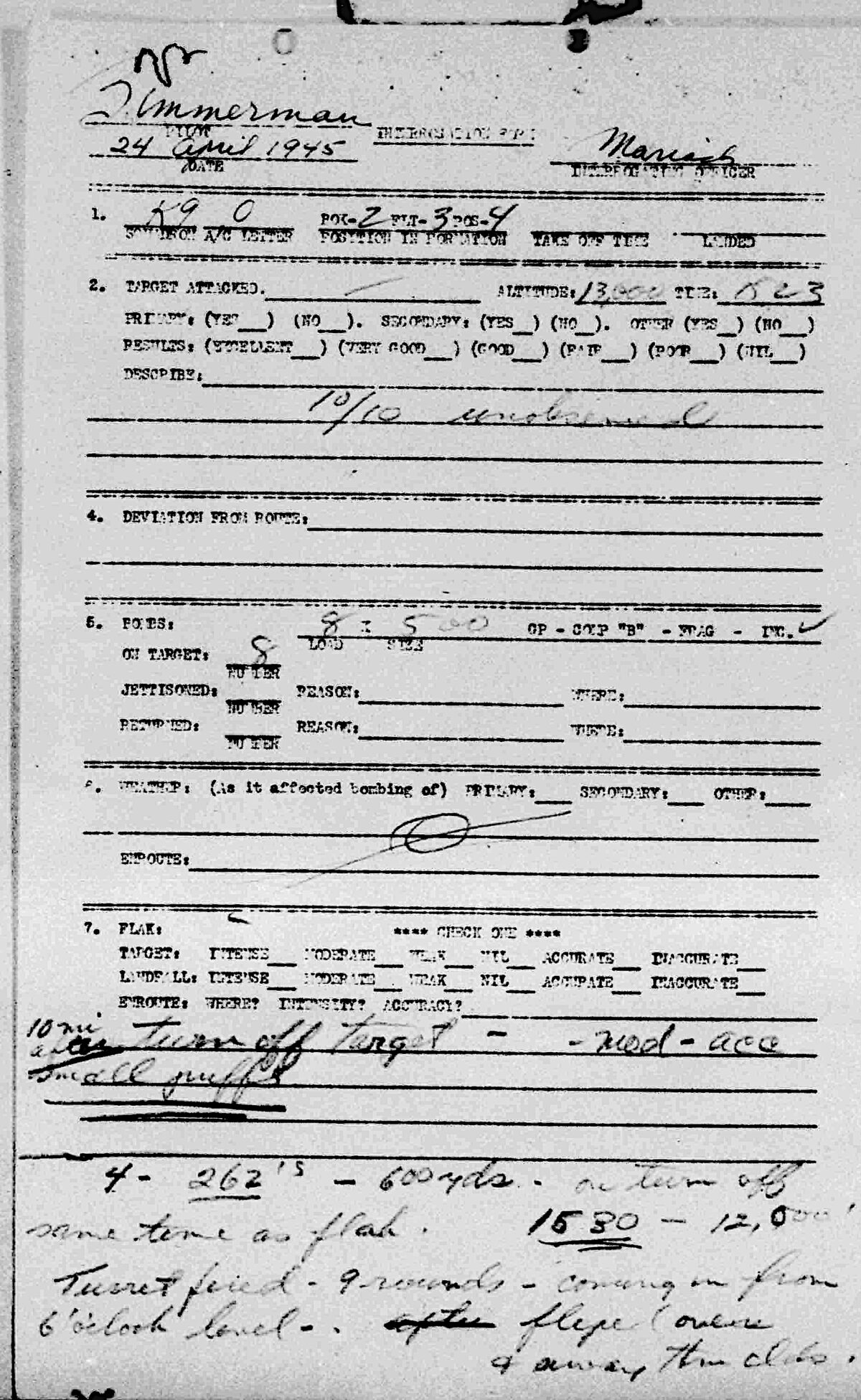
According to pilot Zimmerman, they flew in formation position 2-3-4 in plane 43-34369 Flak Hak III K9-O. They bombed on the primary target at 3:23 pm from 13,000 ft. with unobserved results. The load consisted of eight, 500 lb. incendiary bombs. The skies were fully overcast (10/10). Antiaircraft fire was moderate and accurate ten miles from the target. No damage to the ship was mentioned. They were approached by “4 – Me 262 enemy jets at 600 yds, the same time as the flak. 3:30 pm at 12,000 ft. Turret fired 9 rounds coming in from 6 o’clock level. Flipped over and away through clouds.”
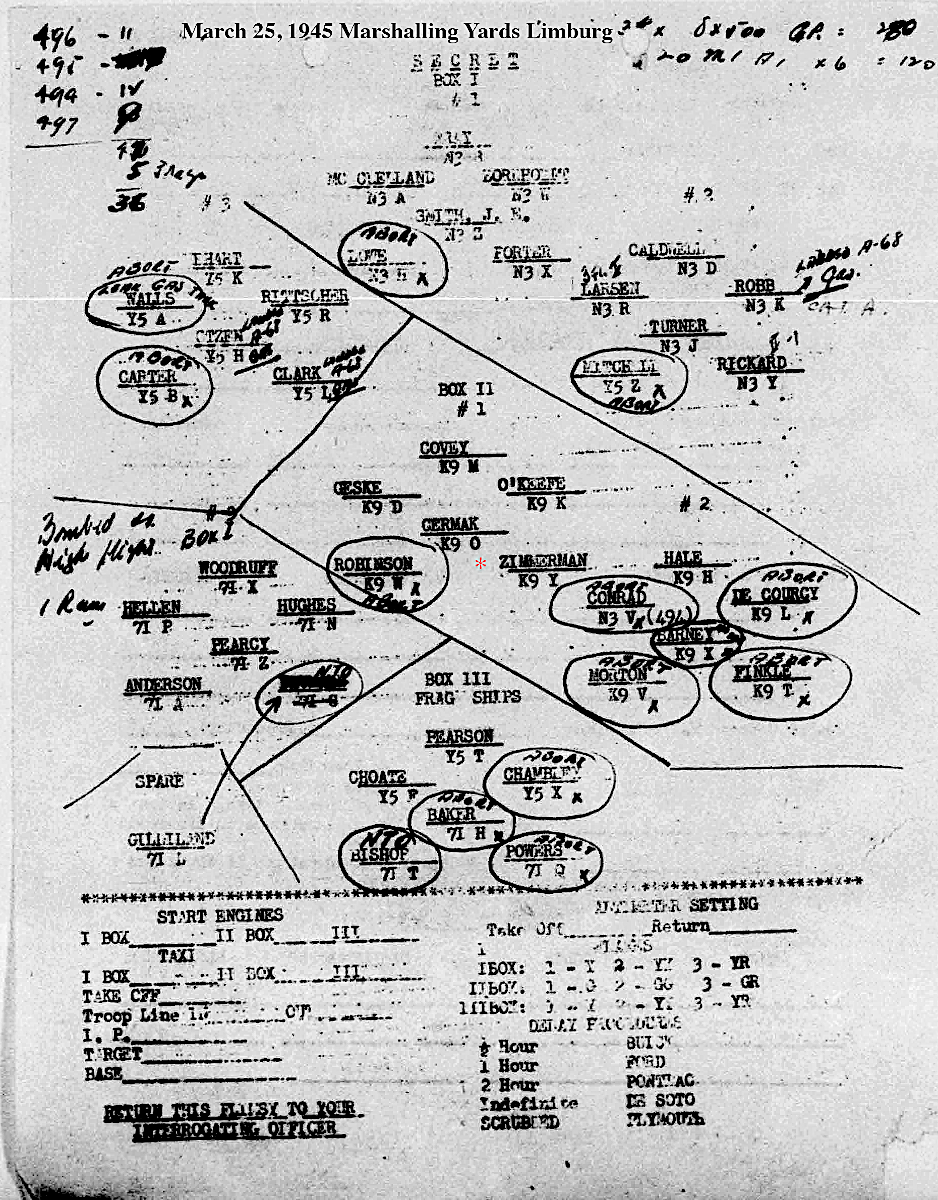
Sgt. Glenn Leroy Tawney flew with pilot 2nd Lt. Zimmerman in position 2-1-5. The target was Limburg Marshaling Yards, Netherlands. Their plane was 42-96048 K9-Y.
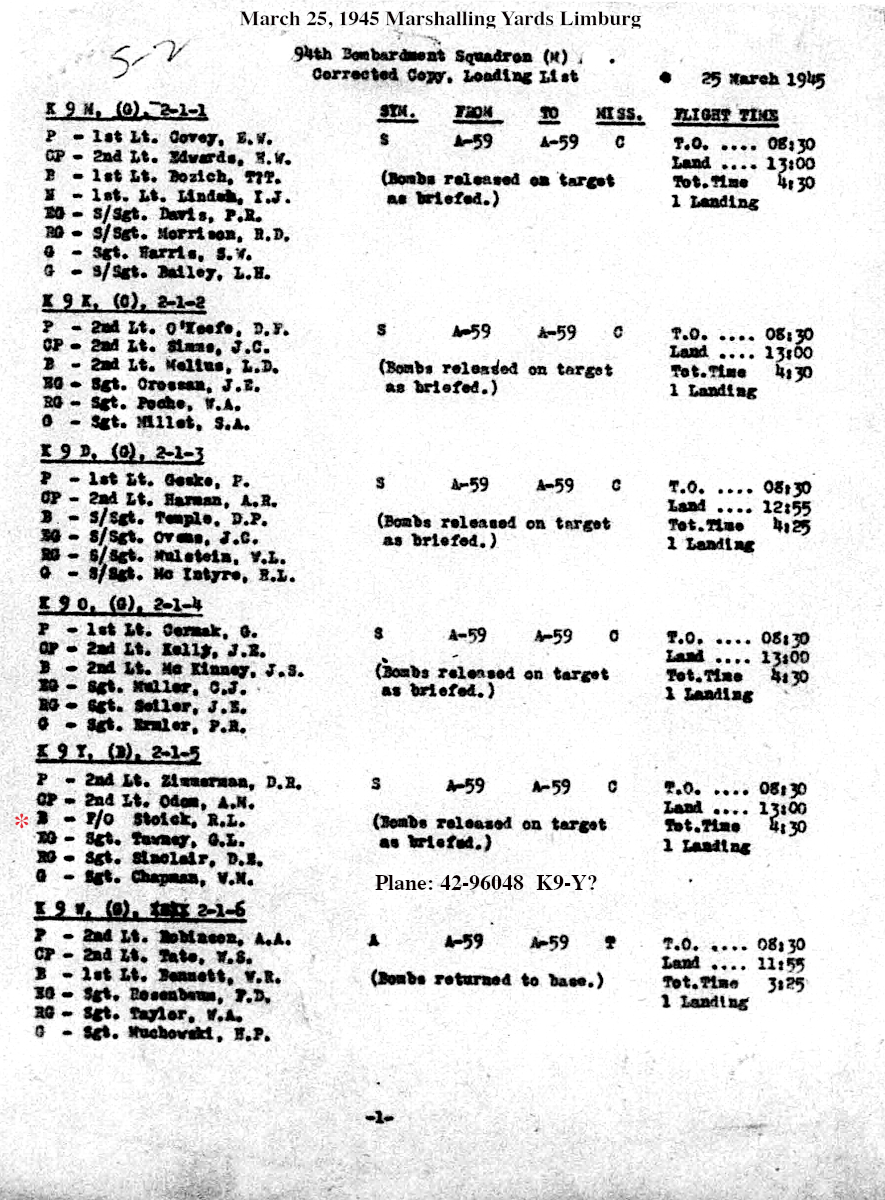
The crew consisted of pilot 2nd Lt. D.R. Zimmerman, co-pilot 2nd Lt. A.M. Odem, Bombardier Lt. R.L. Stoick, Engineer/Gunner Sgt. G.L. Tawney, Radio/Gunner Sgt. D.E. Sinclair, Tail Gunner Sgt. W. Chapman. Their plane was Their plane was 42-96048 K9-Y. in position 2-1-5 of the formation. They took off at 8:30 am and landed 1:00 pm. They dropped their bombs on target as briefed.
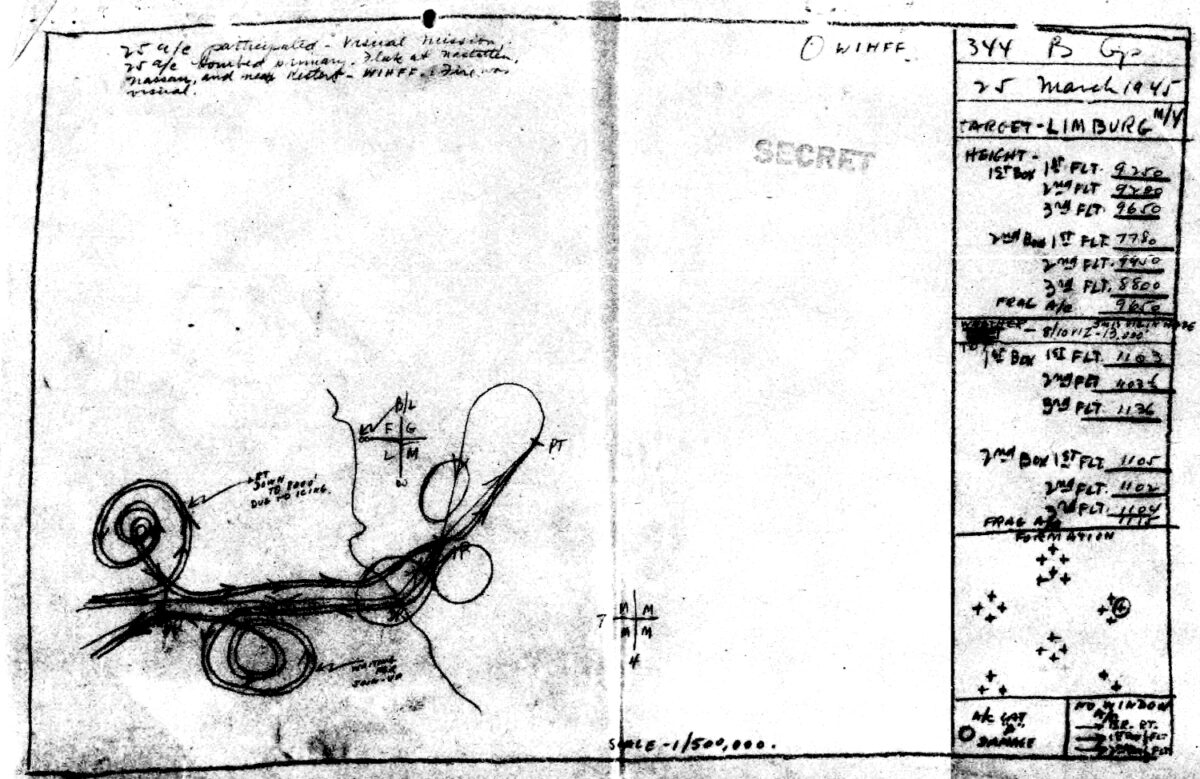
According to the hand drawn map: “25 aircraft participated – visual mission. 25 aircraft bombed primary. Flak at Nastatten, Nassau, and near Restart (?). WIHFF fire was visual”
The first box of planes flew over the target at 9,250 ft., the second box at 7,780 ft. Bombs were dropped at 11:03 am. One plane received Category A damage. (Aircraft can be repaired on site)
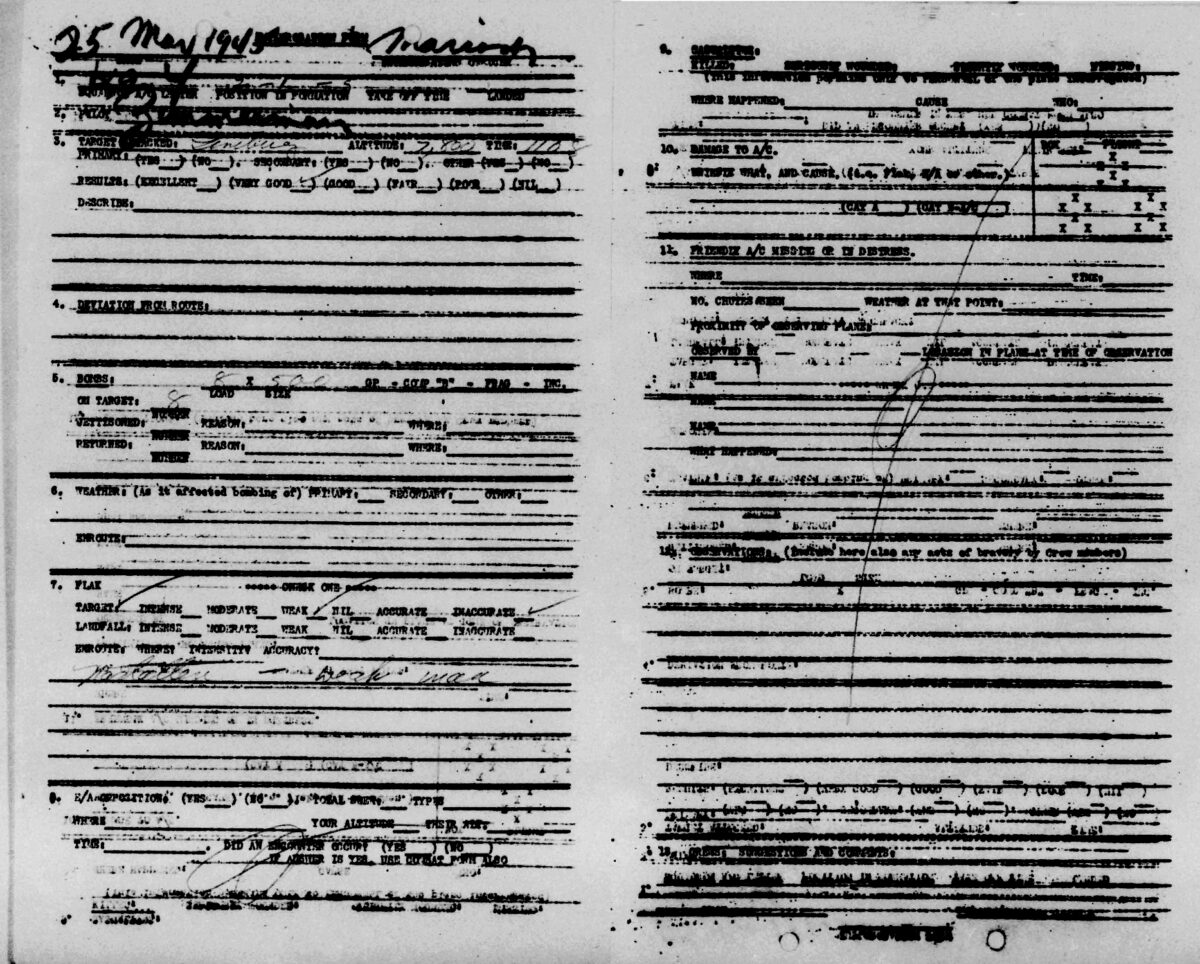
According to pilot Zimmerman, Flying K9-Y, they bombed on the primary target, Limburg, at 11:08 am from 7,800 ft. for good results. The load consisted of eight, 500 lb. bombs. Antiaircraft fire was weak and inaccurate. No damage to the ship was reported.
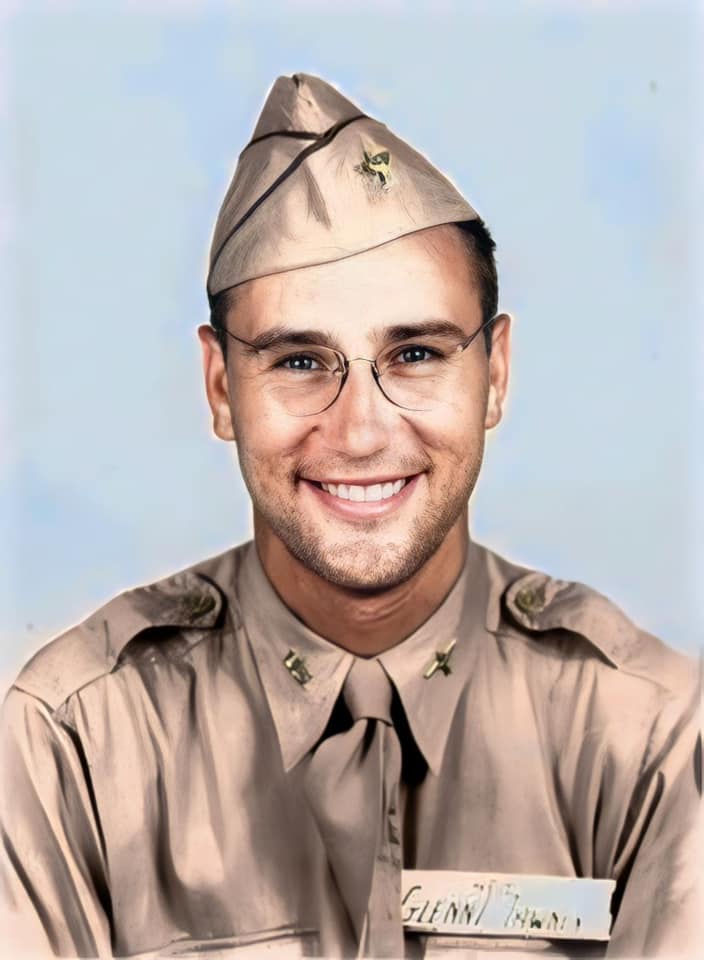
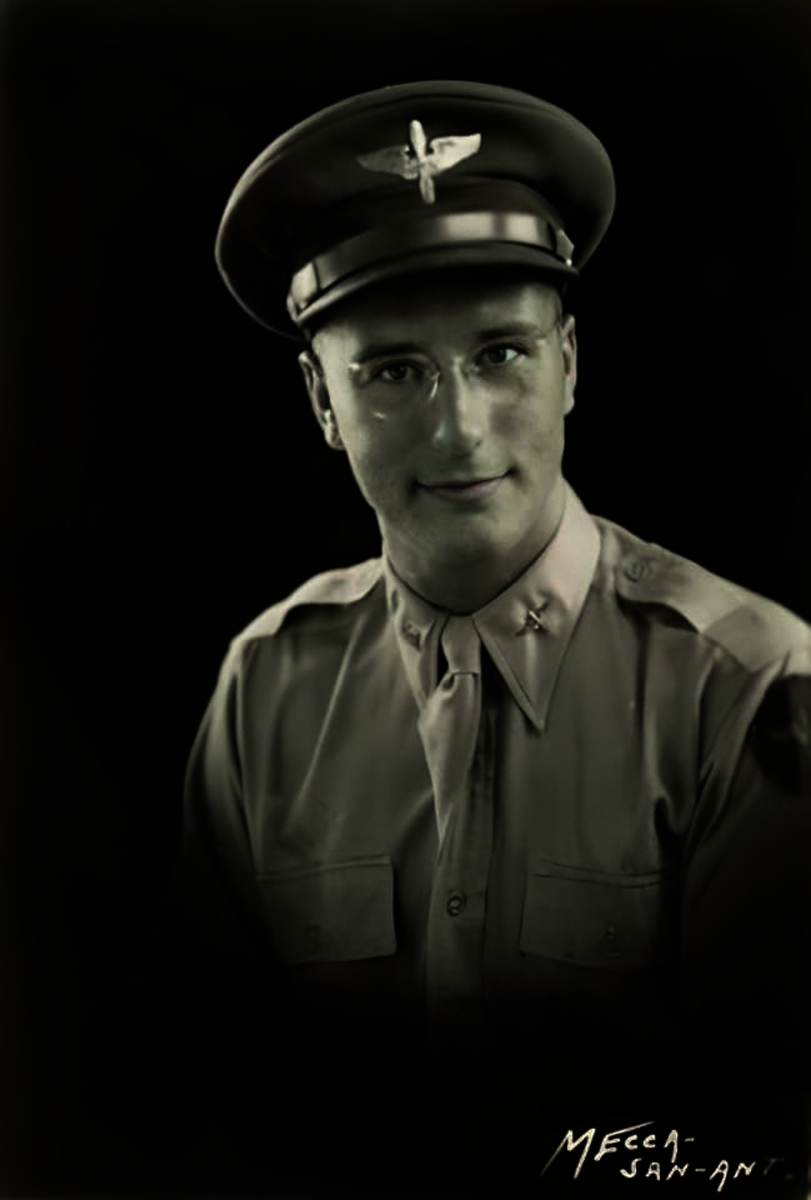
Candids from wartime:
